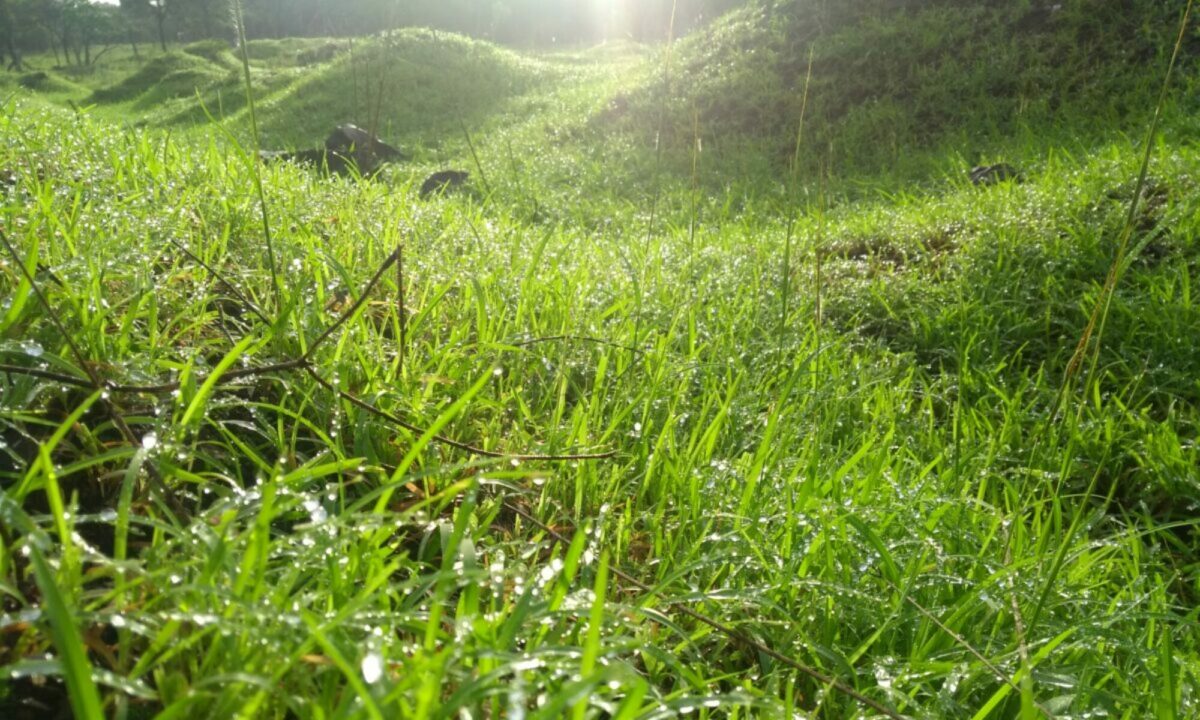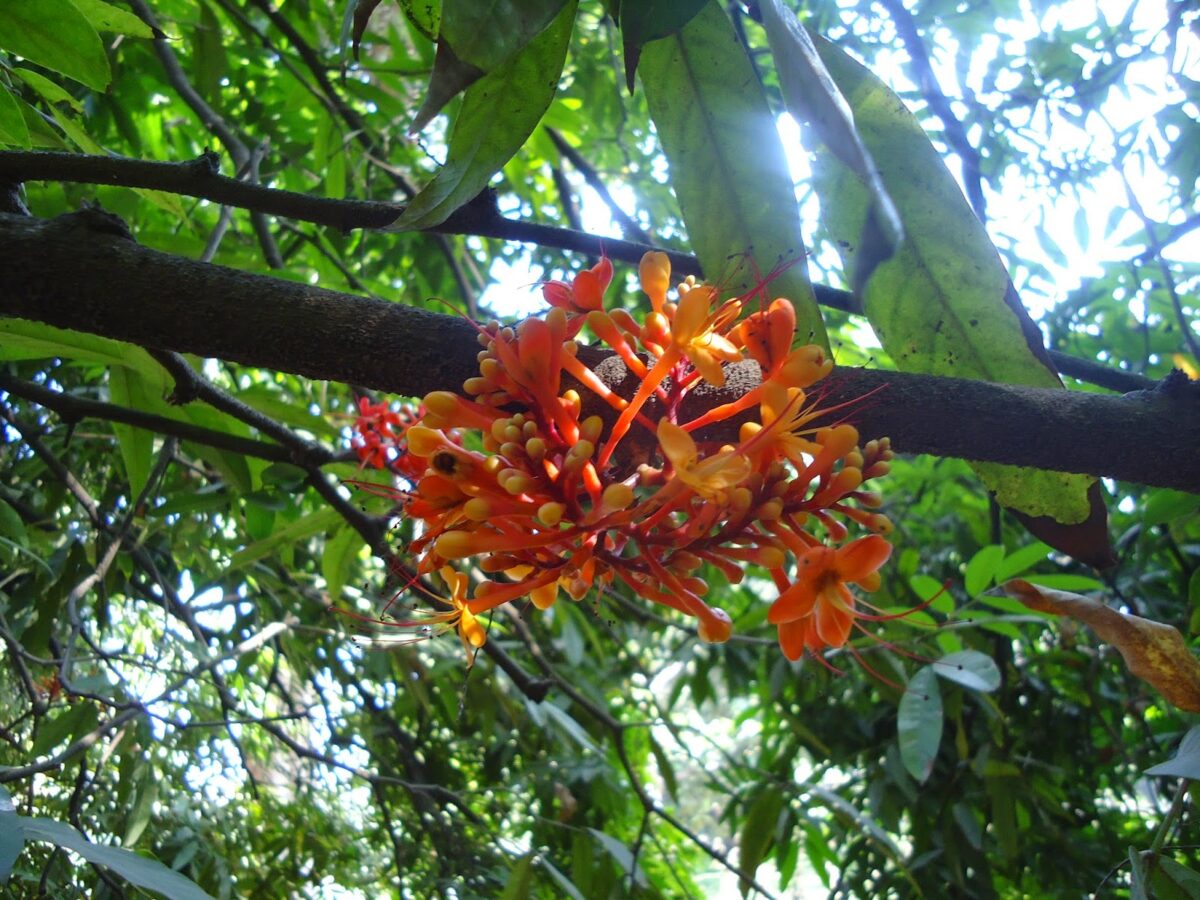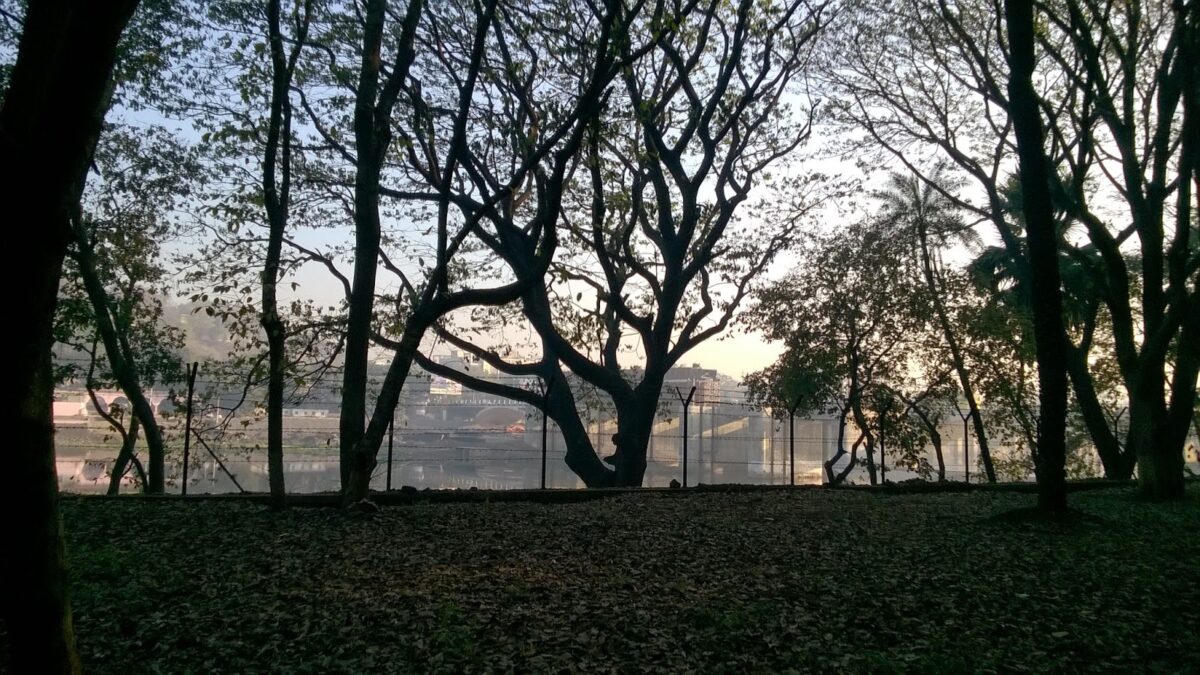
G is for Gool Poonawala Garden
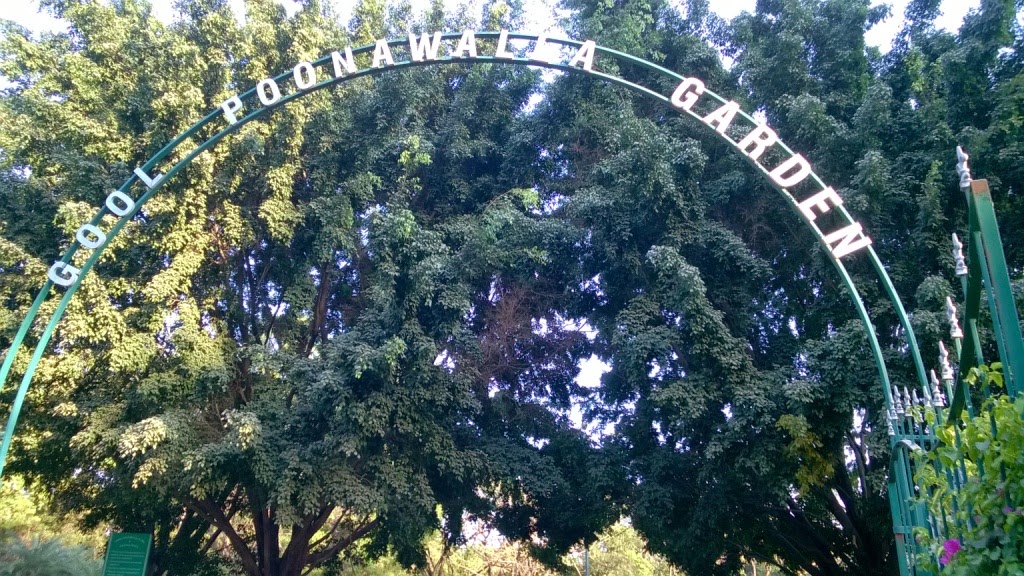
This is basically set up as a jogging track. The oval track is surrounded by a wall of Silver Oak and Acacia trees. I spotted a colony of bats living in the Acacias. The centre of the park predictably has pretty lawns and some seating. I did not see anyone jogging but there were several walkers mostly senior citizens and ladies from nearby residential buildings. Possibly the demographic may be different at another time of the day.
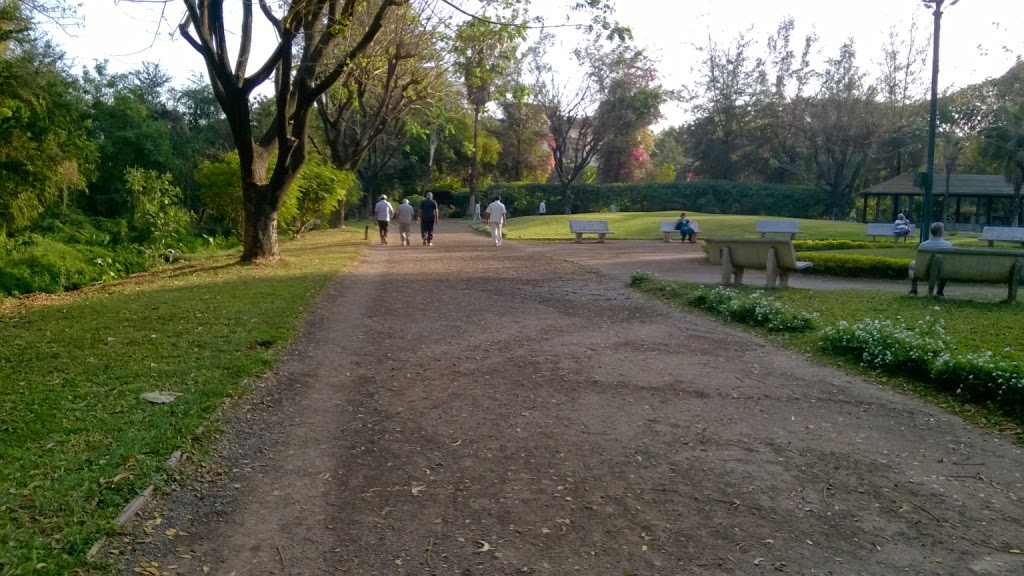 |
| Jogging Track |
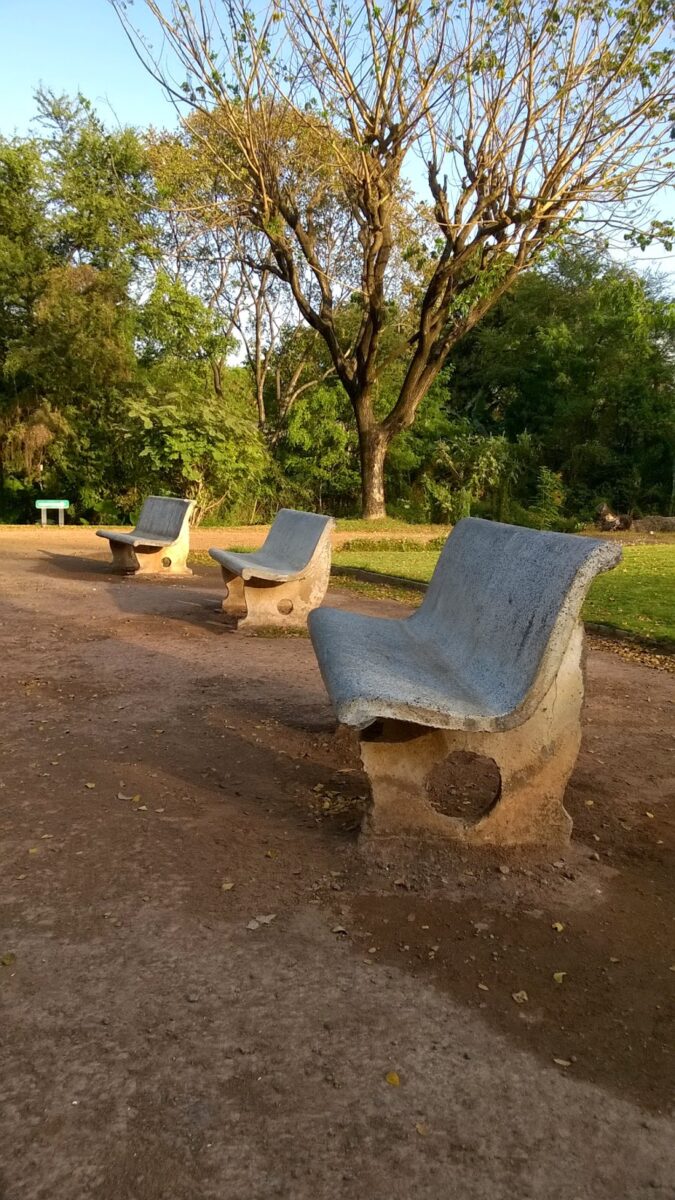 |
| Plenty of seating |
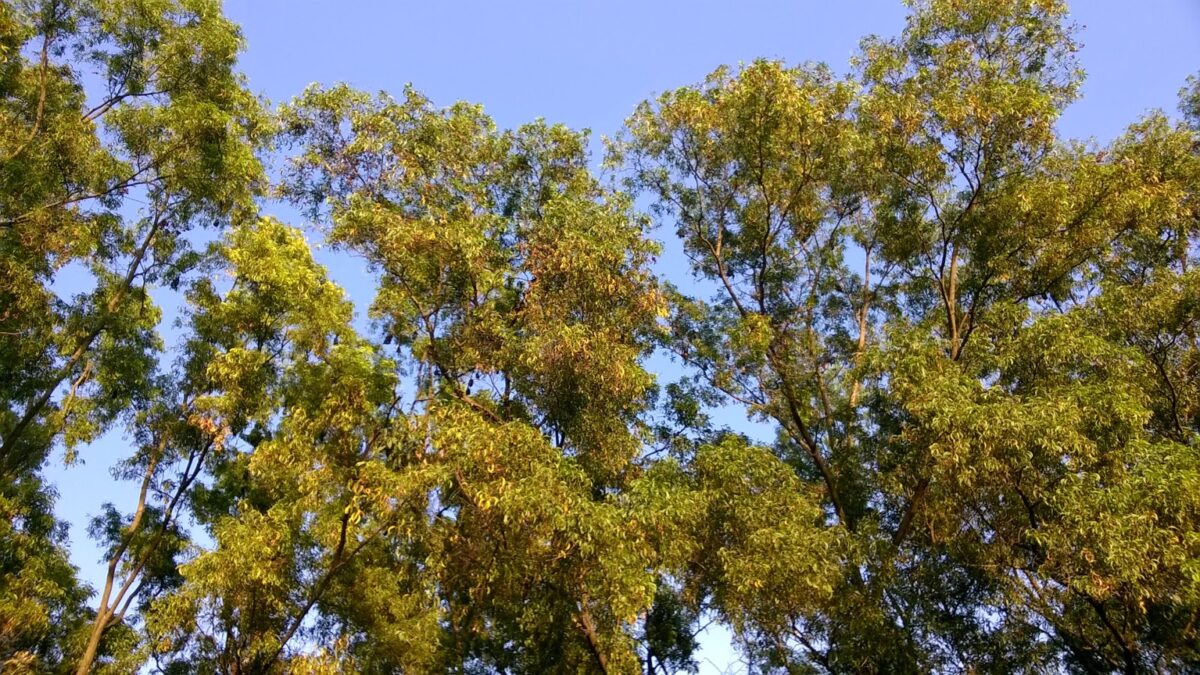 |
| Look carefully and you will see the bats hanging on these trees |
A couple of imposing Ficus benjamina’s loom over the entrance and one is immediately on the track. Turn left or right to jog/walk around the entire site. The park is flanked by the road on one side, homes on two others, but the fourth side seems to be merging into a jungle of sorts that often crops up in land that is not ‘developed’. There is a gazebo that would be ideal for folks to exercise when its raining. Its not very rich in terms of diversity or age of trees but then this garden is more about exercising/jogging rather than botany. Come here to work out, or Yoga or for Pranayama.
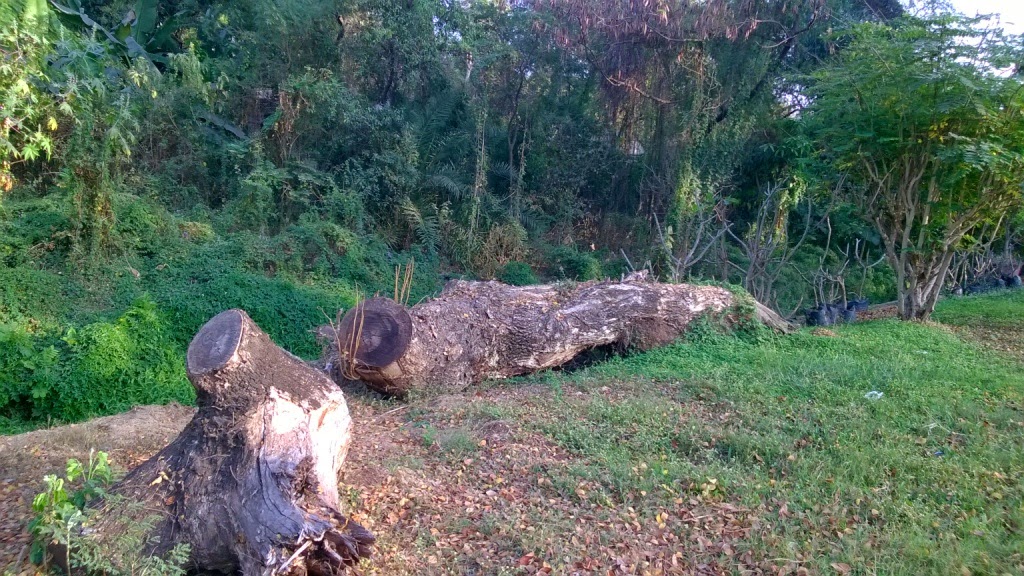 |
| A jungle of sorts is seen at one edge of the garden |
An great initiative by the PMC for local residents. The Sachin Tendulkar Jogging Track in Rajendra Nagar area is a similar but smaller garden that people of the area would surely be enjoying daily.
Info:
Entry Ticket: Nil
Timing: 6AM to 10AM and 4PM to 8PM
Parking: Available and Free
Drinking Water: Available (hygiene and quality not checked)
Restrooms: Available (hygiene and quality not checked)
Location Map here.
E is for Empress Garden
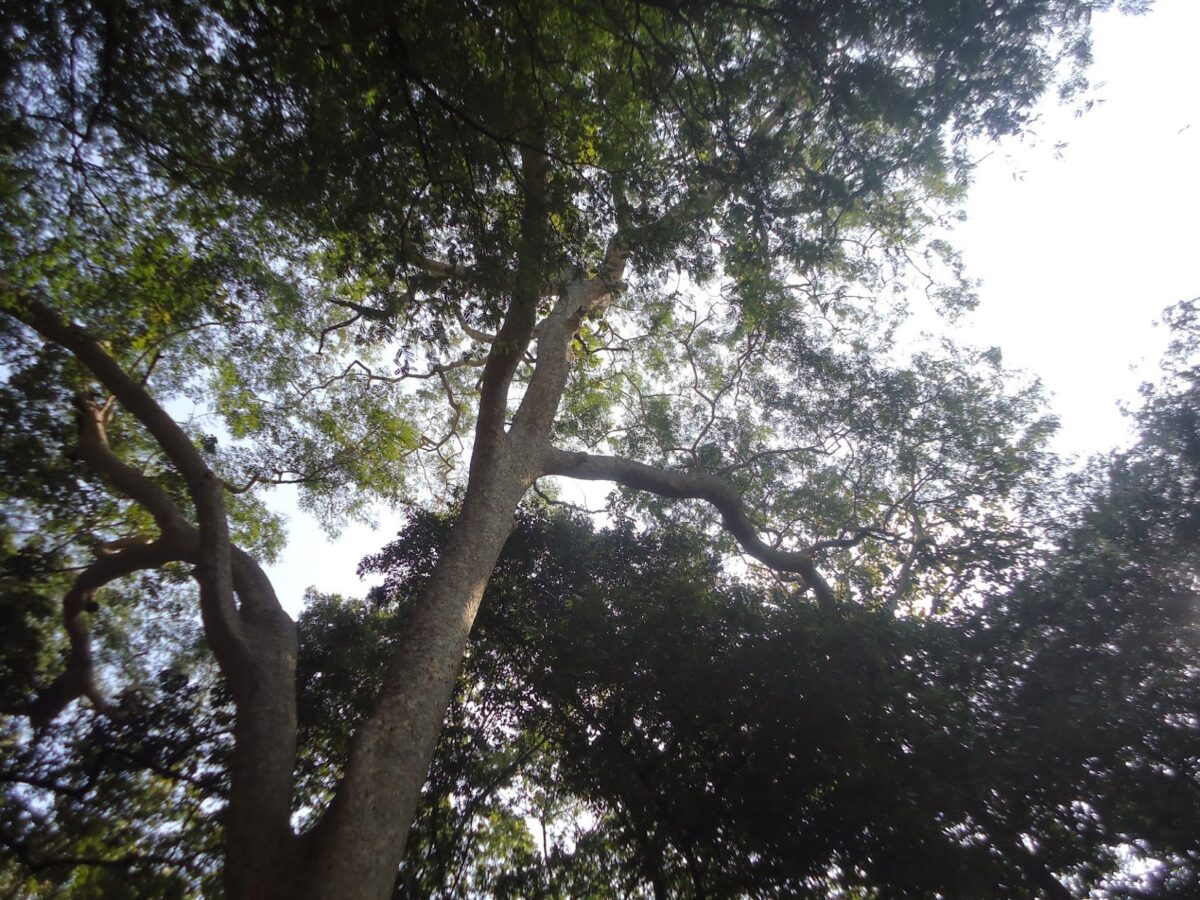
For a tree lover, the joy begins almost as soon as you reach because the imposing Kinhai and a Moha in the parking area will delay your entry. Feast your eyes and proceed for more tree wonders – made somewhat easier by the helpful labelling on the trunks. A stream of sort runs through the foliage creating a micro habitat for some water birds and flora. Empress does not have the typical manicured lawns that one expects in a garden. To be fair, its a botanical garden so don’t look for ‘accepted’ or ‘traditional’ aesthetic elements. Rather revel in the thought of sharing space with living beings that may be over 100 years old. What secrets would they be holding? If only trees could tell us…
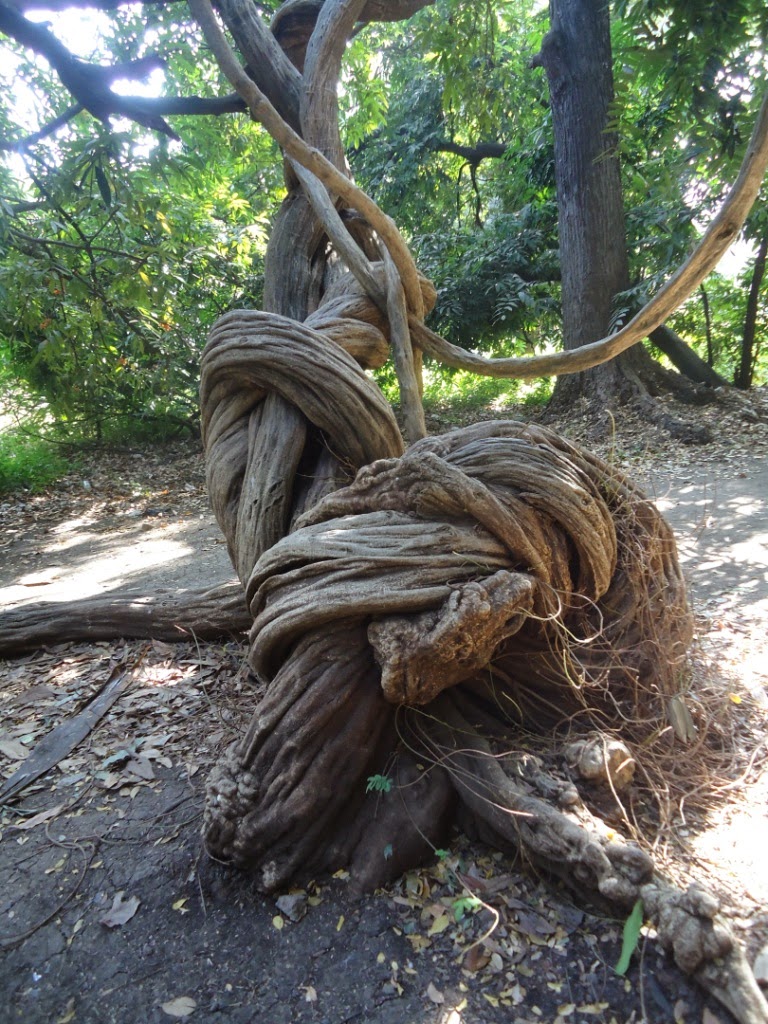 |
| Gnarled trunk of Entada rheedei (Garambi) – a giant liana |
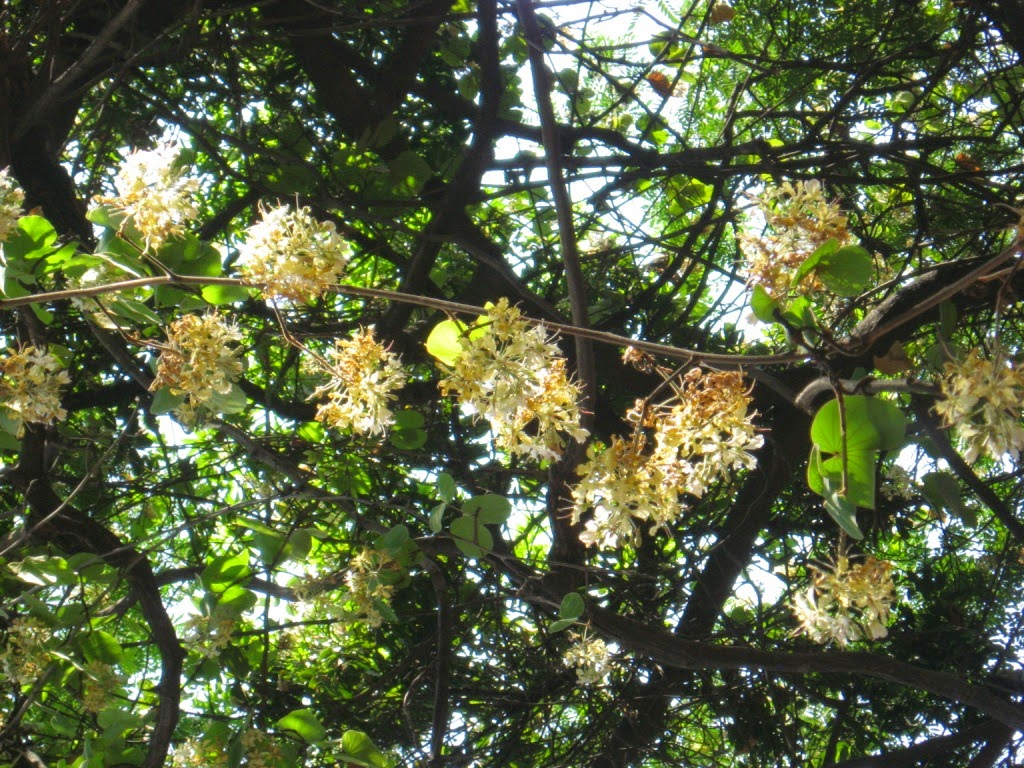 |
| The mesmerising creeper Bauhinia vahlii which loops over the tall trees and forms a floral canopy in April |
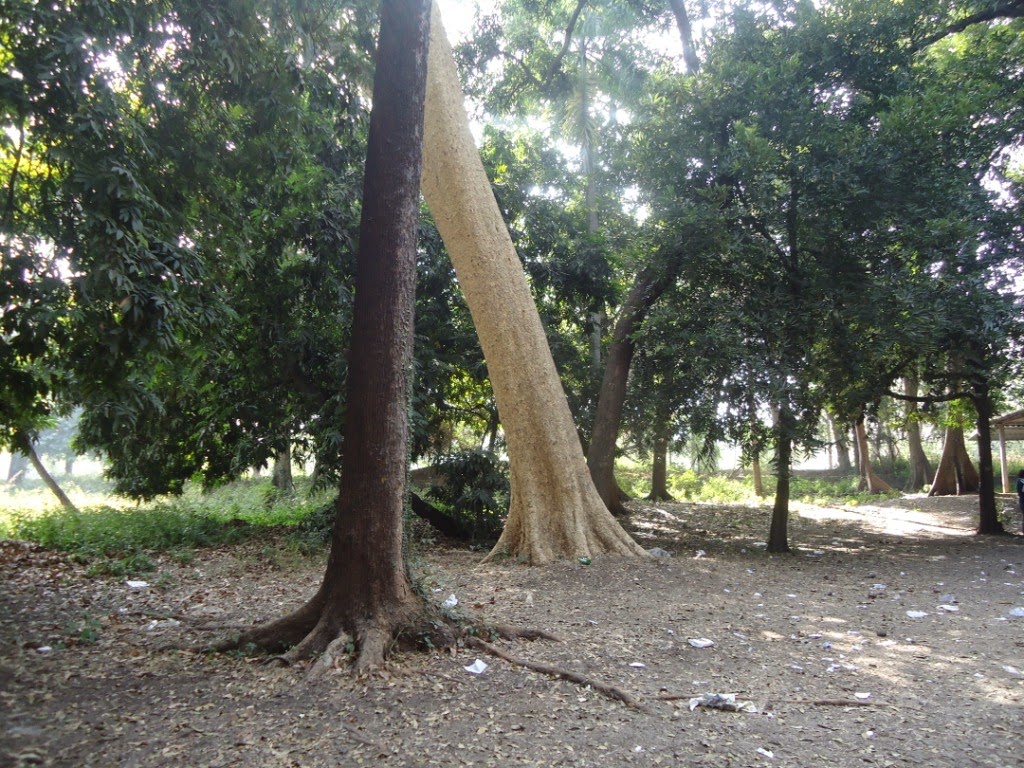 |
| The trunk of the Kinhai |
Dont miss the giant creepers that grow here – living up to their ‘giant’ status. An interesting fact about Bauhinia (shown above). The genus Bauhinia is in honour of 16th century botanists Caspar and Johann Bauhin who were twin brothers. Species in this plant group also have two lobed leaves that are identical when folded.
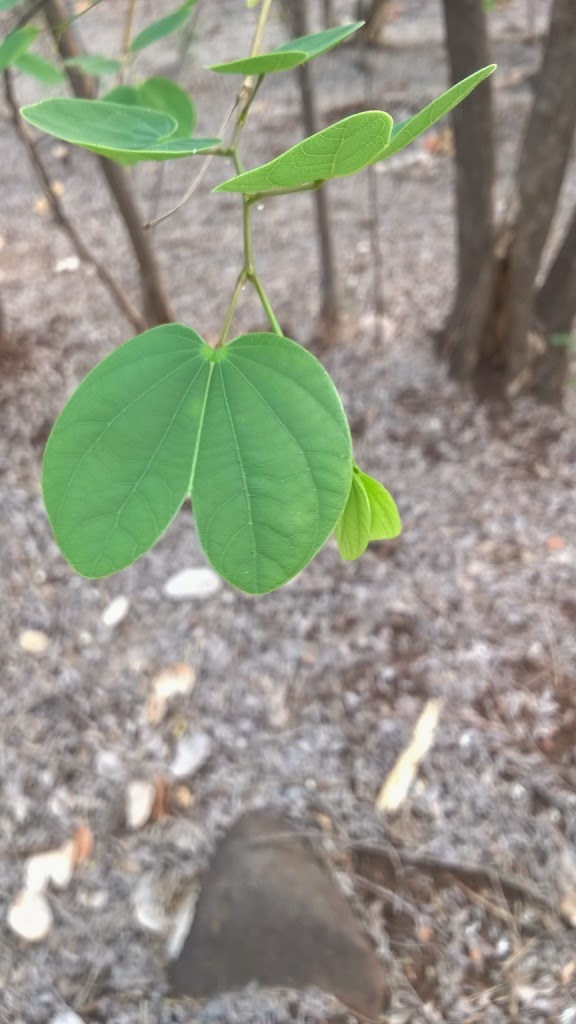 |
| Twin lobed leaf of Bauhinia |
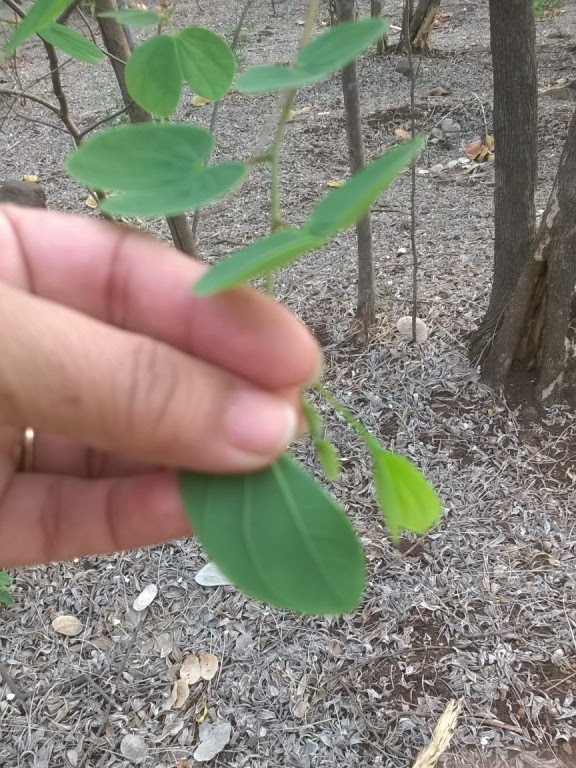 |
| Folded leaf of Bauhinia |
The garden has the usual play area for kids which seems highly popular. There is a small cottage that serves as their office and is used for small events – I have attended a book launch there. This garden is a popular site
for school picnics, family outings and of course health enthusiasts.
They have a ‘Nana Nani Park’ which is a section for grand parents (Nana
Nani mean grandfather and grandmother respectively).
The high point of this garden is its annual Buds n Bloom show held sometime in January each year. Besides the usual stalls selling gardening stuff; the gardeners at Empress create stunning displays using seasonal flowers. In addition, there is a wonderful display of Ikebana arrangements. Yet another unusual exhibit is an collage created using grains, pulses, fresh fruits and veggies. There is no limit to creativity! Local Bonsai enthusiasts display select trees during the annual Empress Buds n Bloom fest.
A heritage garden that should be on your list when visiting Pune.
Enjoy!
Info you can use:
Entry: INR 10 for 3 years and over
Timing: 930AM to 630PM All days of the week
Parking: Available and Chargeable
Drinking water: Available (quality and hygiene not checked)
USP: Unique trees and creepers; Plant nursery; Palm garden; Sale of organic veggies and fruits; Annual Buds n Bloom show; Birding; Tree spotting
Location Map here.
This post is part of the April AtoZ Blogging challenge and I am writing about gardens in Pune.
C is for Chittaranjan Vatika
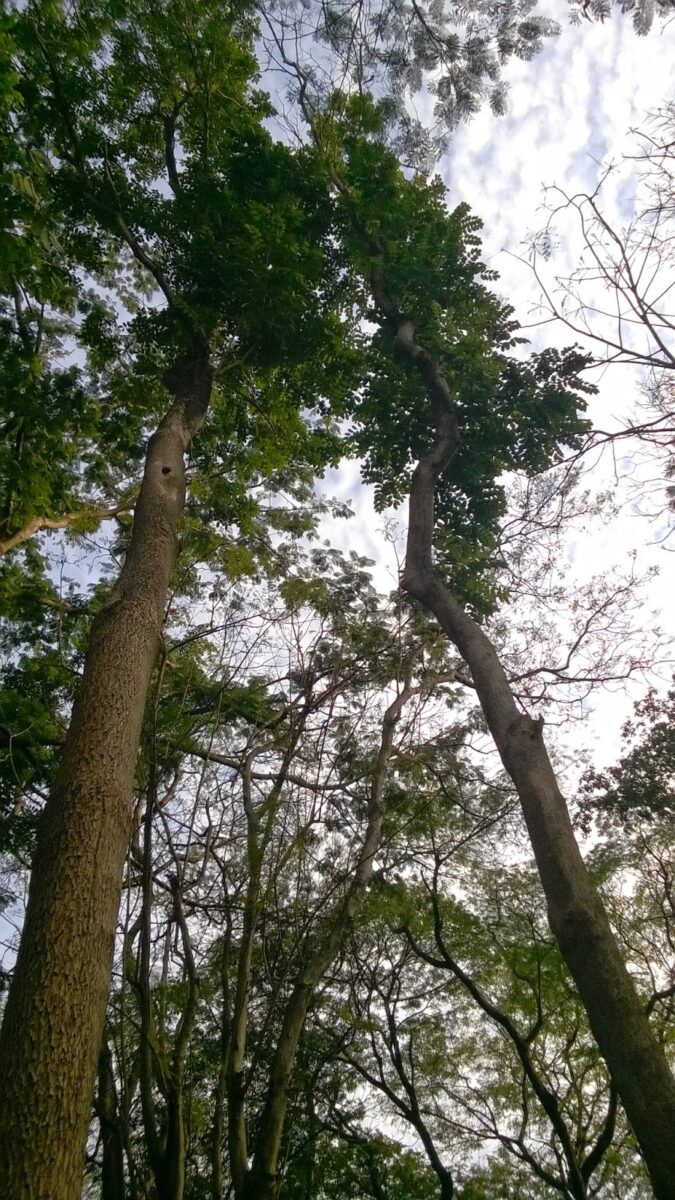
Trees were the lasting impression at the Chittaranjan Park. It is located next to a ‘nullah’ (canal or small urban stream) and obviously is an old garden. It has a tiled pathway along the perimeter that serves as a walking track. Obviously I got into the way of the regulars, with my frequent halts for photographs or tree identification! I suggest walking in the same direction as the majority and a similar pace to avoid exasperated looks from regulars (many of whom were wearing masks for some reason). Want to pause? Then just step into the adjacent lawns. This track is thoughtfully marked for distance covered and there is a ‘fitness chart’ of sorts at one end.
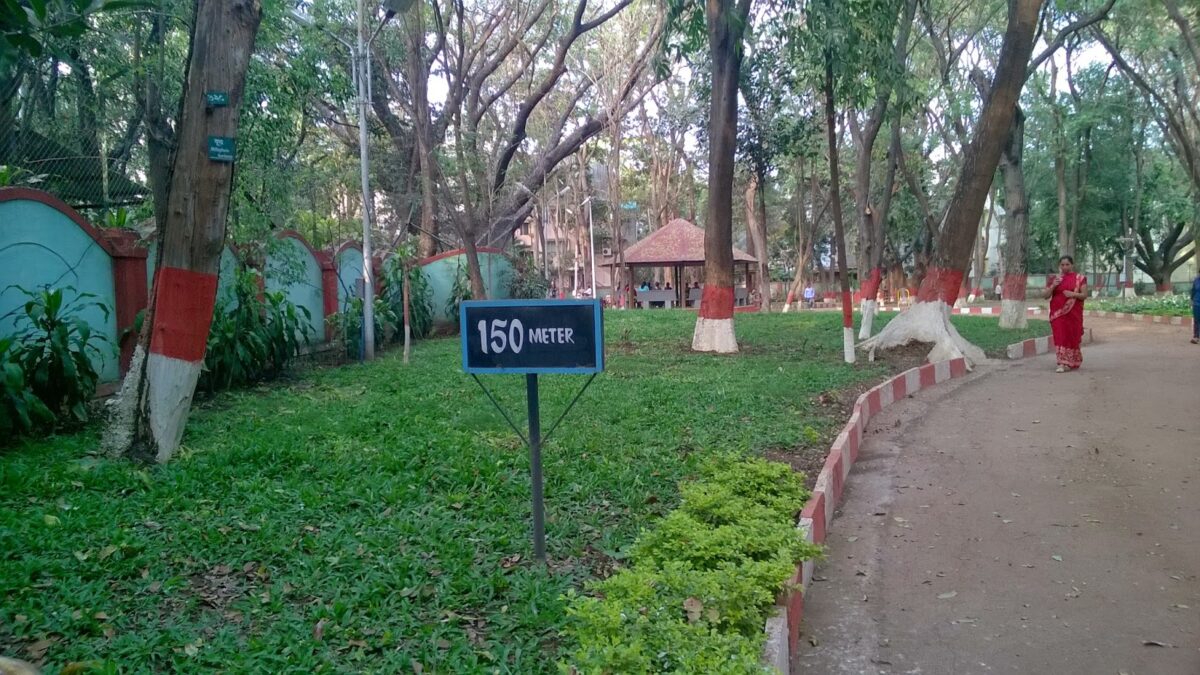
The Chittaranjan Vatika also has a mock traffic training area. I am not sure whom it is meant for really, but it has signals, road signs, intersections and so on. From what I saw, it was reduced to a spot for a photo-op or play or resting/walking zone. I do wish more would take advantage of what it’s meant for…
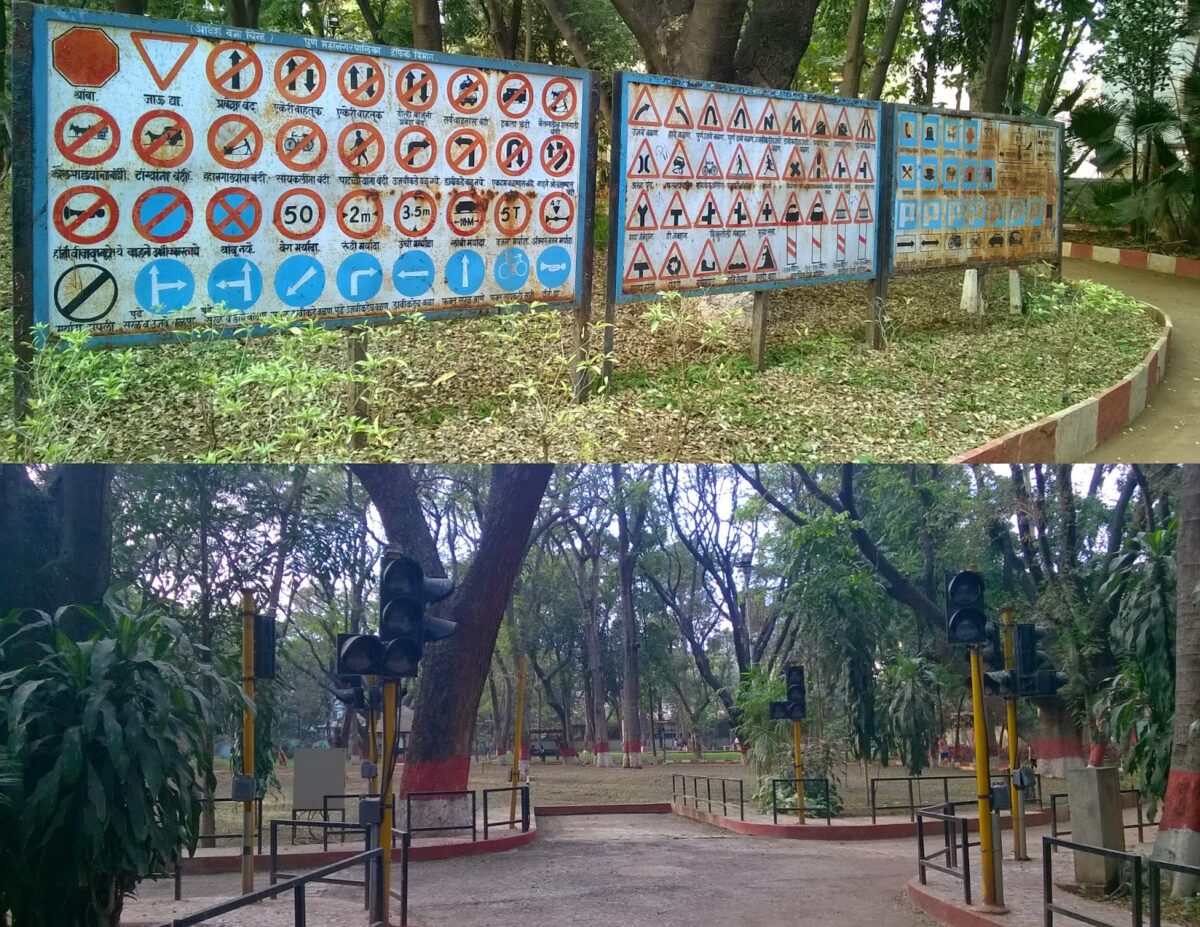
The park is home to the a library called ‘Vasundhara Vachanalaya’ which seemed a really cool idea. Borrow books and read them in this garden. Perfect! The kids play area was buzzing with activity.
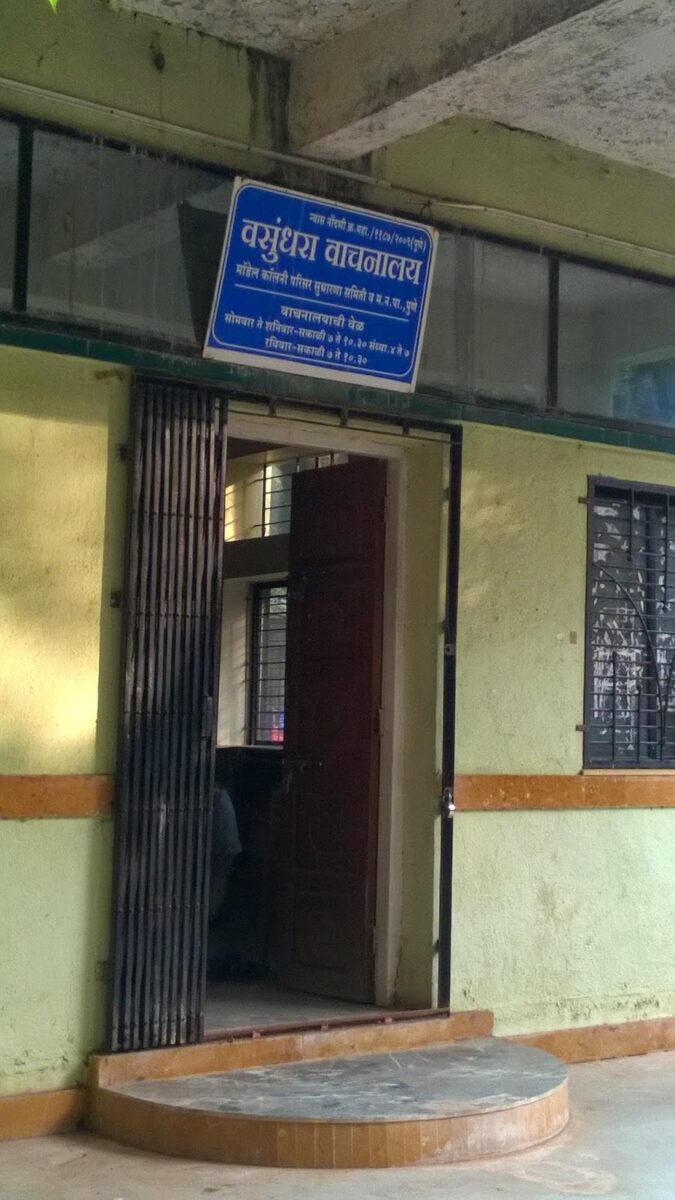
Many trees in the park are labelled which should help newbie tree lovers. Here are few trees that I identified: Saraca asoca, Khaya, Parkia biglandulosa, Sanmea sanamea, Spathodea campanulata, Kigelia africana, Alstonia species, Peltaforum species, Ficus species and Casuarinas. There are many more, which I leave you to spot and ID.
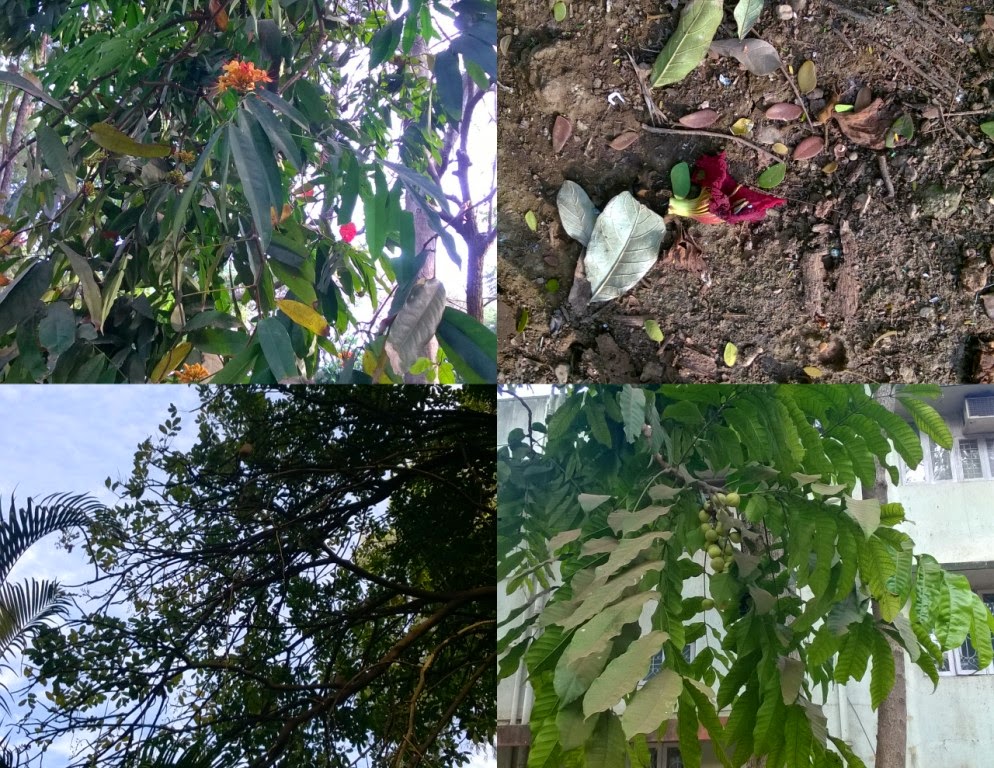 |
| Seeta ashok, Kigelia, Rohitak |
Do sit a while and enjoy the sound of gushing water in the adjacent nullah. The occasional breeze sets the wind-chimes tinkling in a nearby home. All in all, a wonderful garden in Model Colony, Pune.
Cheers!
Info:
Entry Ticket: Nil.
Timing: 6AM to 10AM and 4PM to 8PM
Parking: Available
Drinking water: Available (quality not checked)
Rest rooms: Available (quality not checked)
USP: Library, Traffic training signs
Location Map here.
A is for Aba Bagul Udyan
I had two choices for A both really interesting ones and it was a difficult one. So I wrote about the Alice garden and here we are, at the Aba Bagul Udyan. This is the park’s common name but technically, it is the Late Vasantrao Eknath Bagul Udyan. Udyan/Vatika are the Marathi words for park/garden. I have used them interchangeably in my posts.
This park is located right on a main road, a very busy road at that, yet
remains quite inconspicuous. I had several visiting opportunities with a botany group but alas, I could not join. Housed in an area that I
frequent, it was quite a shame that I stayed away for so many years.
This blogathon seemed a good way to make good many such pending visits.
I
remember the area from early 1980s when it was a rocky bare space through
which flowed a ‘nullah’ (a storm water drain that flows into the river). Over last
3 decades the city has grown tremendously and ‘developed’ and like many other parts, this area is unrecognisable now. I cant say who is to be credited
for the change but the garden I am about to describe is presently under
the Pune Municipal Corporation (PMC).
On entering the Udyan, the Star Apple tree (Chrysophyllum cainito) is the first thing that gets attention. Its canopy of green and golden brown leaves casts a cool shadow in which rests a lion! A statue of course!
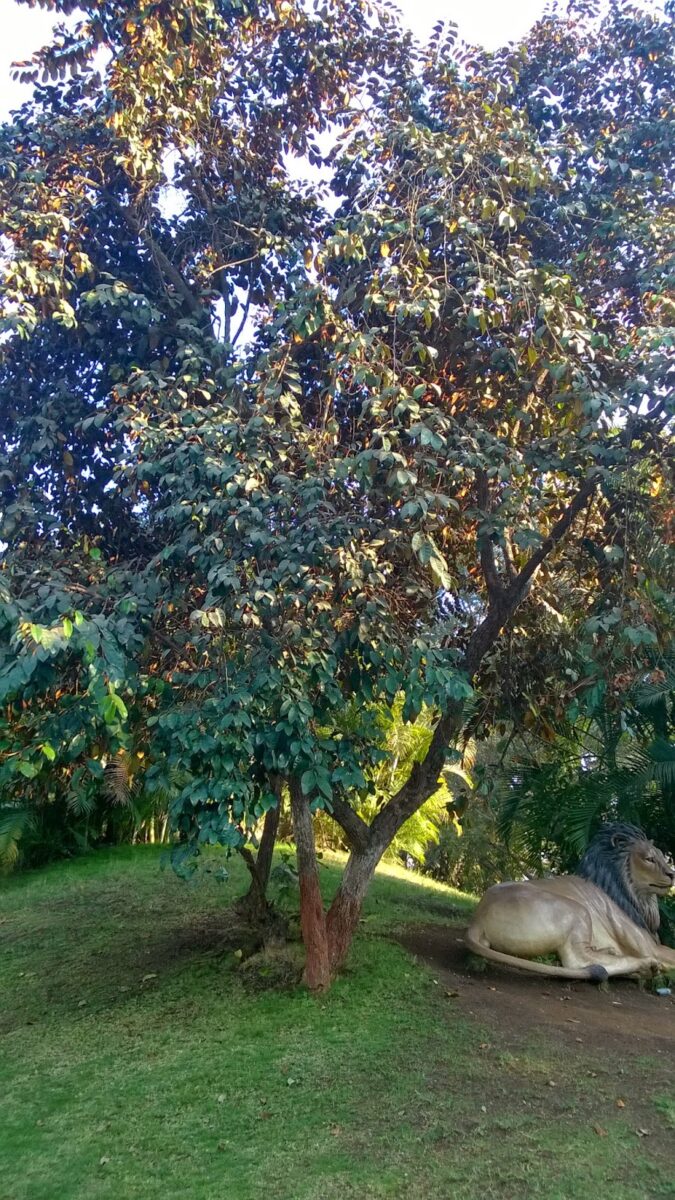 |
| Star Apple |
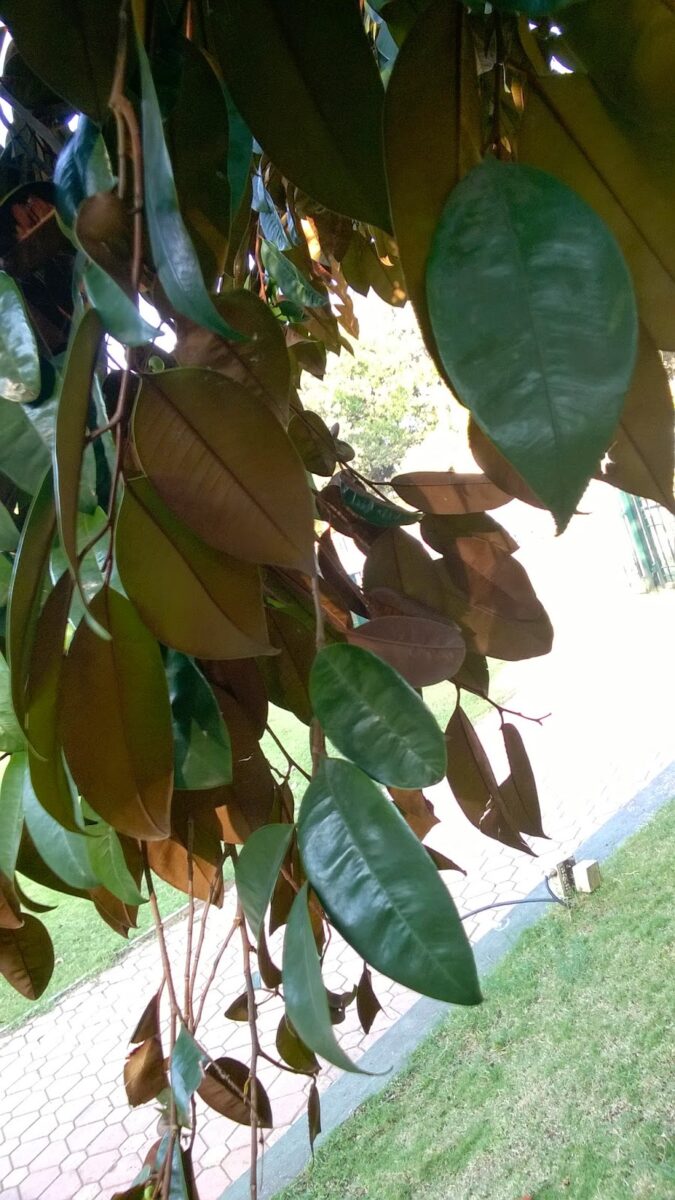 |
| Distinctive leaves of Star Apple |
 |
| Chrysophyllum cainito |
The park has a tiled walkway that goes around the perimeter and also meanders through the well manicured lawns. Aerial roots of a banyan tree have created a ‘wall’ of sorts. Walk deeper into the park to see the ‘nullah’. Obviously designed by professional landscapers, the Aba Bagul Udyan also has a large play area for kids, one that is quite popular with locals. The park also has the Bhimsen Joshi Kaladalan (an art gallery) and a musical fountain cum laser show. This 20-minute is on from Mon to Fri at 745pm and on Saturdays at 730pm. I have heard excellent reviews of the musical fountain and its the only one of its kind in Pune that I have heard of.
 |
| The musical fountain and its seating area |
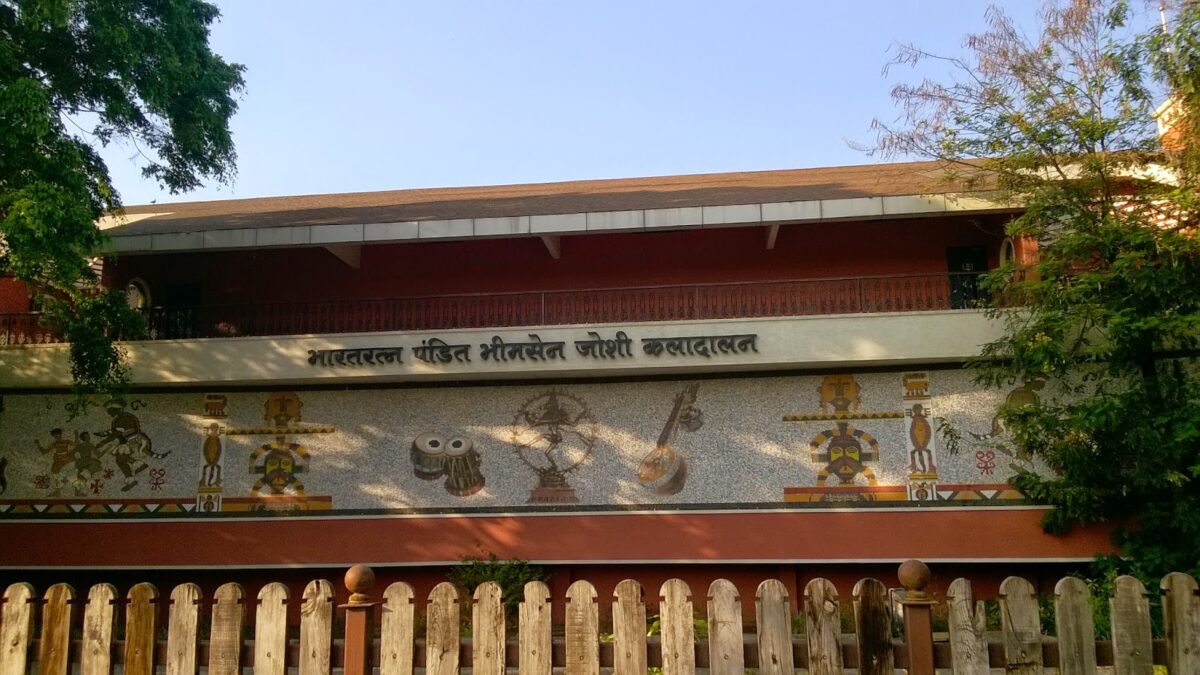 |
| Art gallery |
I spotted the Madhavi lata (Hiptage benghalensis) – a liana with fluffy toothed flowers. It was in full bloom and its flowering heralds the spring season. The genus Hiptage is derived from ‘Hiptamai’ – a Greek word that means to fly. The Madhavi lata has a three winged fruit that can ‘fly’ – is propogated by wind.
Other significant trees that I spotted include the Triangular leaf fig (Ficus natalensis ), a really tall Rubber plant, a well grown Raktarohida (Aphanamixis polystachia), Satween (Alstonia scholaris) and Seeta ashok (Saraca asoca).
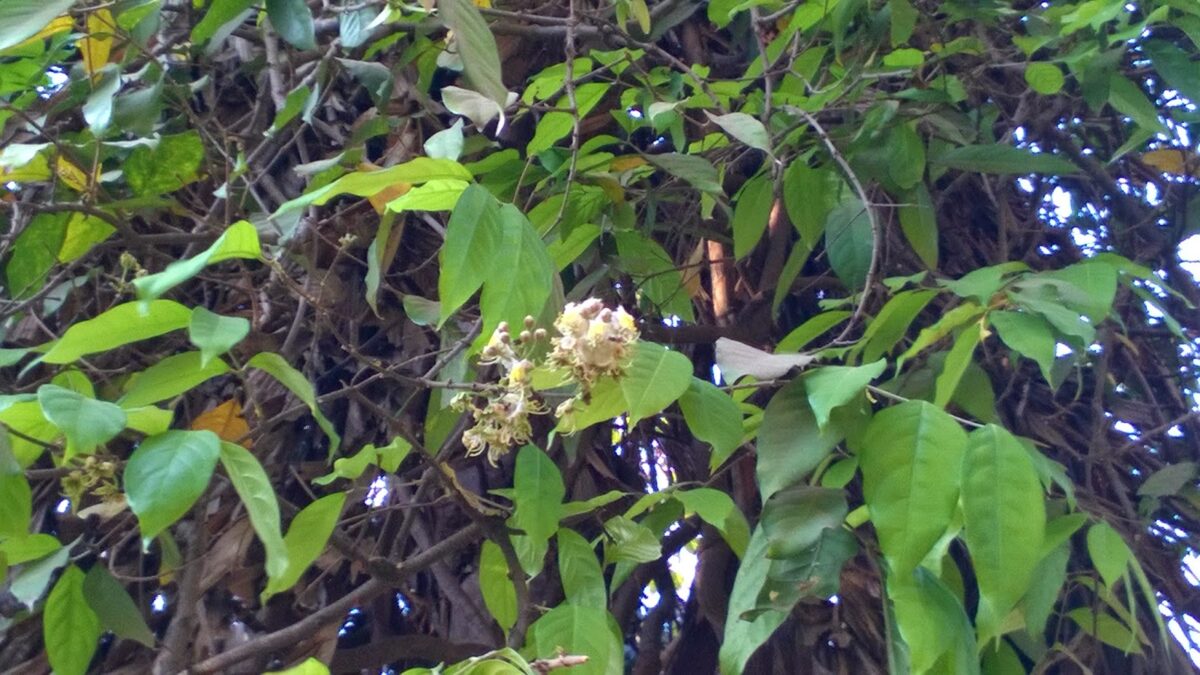 |
| Madhavilata |
 |
| Ficus elastica |
Due to the water body, I am sure, this must be a good site to see birds.
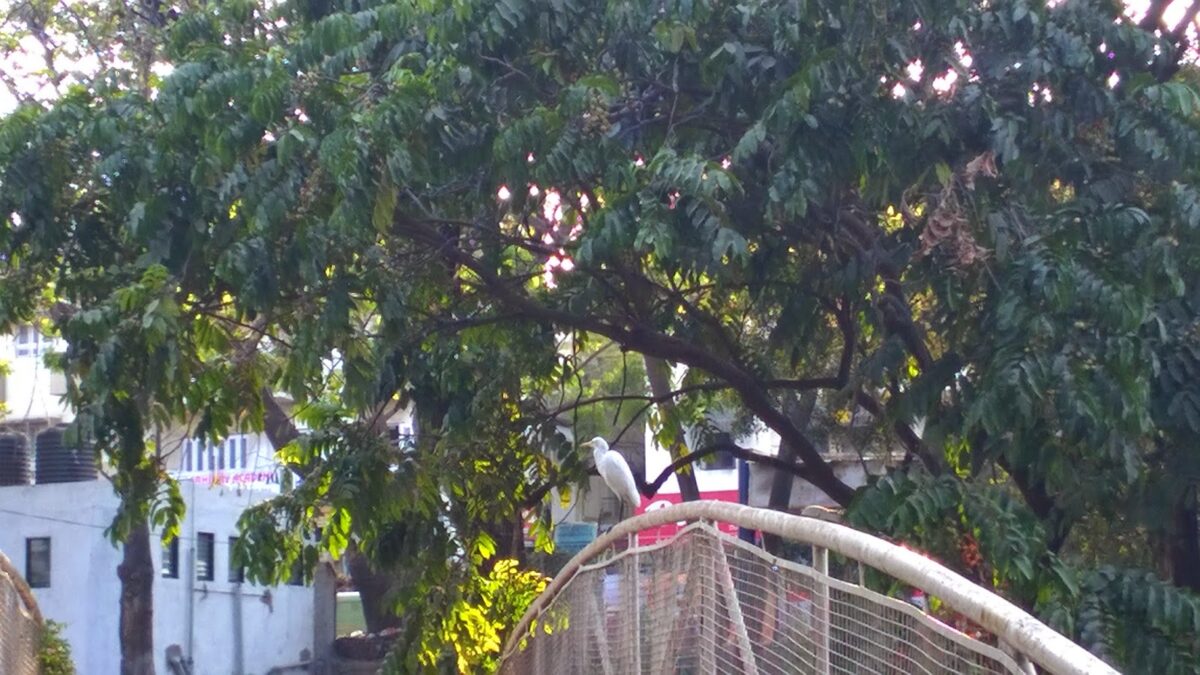 |
| What do you see? The Heron? The Anaphamyxis polystachia? The bridge? |
Here is a short video of the musical fountain at this park:
All in all, a great place in Sahakar Nagar to exercise or relax or introspect or dream!
Before I end, A is also for Alice Garden which is an urban jungle of sorts. You may like to visit that too.
Info:
Entry Ticket: Yes INR 20 for adults.
Timing: 6AM to 10AM and 4PM to 8PM
Parking: Available
Drinking water: Available (quality not checked)
Rest rooms: Available (quality not checked)
USP: Trees, Musical Fountain
Location Map here.
April AtoZ Theme Reveal
 |
| Theme Reveal Blogfest |
Soooo…
Will my posts be about trees? Yes but not only about trees…
Will they be about gardening? Well, gardens yes but not gardening…
Will it be about local tourism? Yes local places will be the main focus…
So WHAT is the theme?
I plan to write about gardens in my city Pune, the trees therein and special features if any. I made it a point to visit all gardens before writing about them which took up most of my time over the last few weeks.
I realised that except for two, I had not visited any gardens in Pune. Sad because, I now see that the parks are really beautiful and clean and each has something different to offer. This makes me proud of the efforts of the authorities. I am quite a vocal critic of the garden department but credit must be given where due…
I had a stroke of luck as I found a map by the Pune Municipal Corporation that detailed locations of their gardens. But this did not necessarily make my task easy as most parks were named after Kings or Queens or some prominent person who is no more. Hence I had a plethora of gardens for alphabets like ‘C’ or ‘L’ and almost nothing for the others… I am bound by the A to Z theme so decided to take some leeway and have used popular names of parks or their ‘official’ names.
Irrespective of whatever part of the world you visit from, dear readers, you are bound to find something interesting here in this month. Maybe its an echo of a garden in your city or one that you have seen or one that you would like to see created! I would love to hear from you.
Good luck with your posts!
🙂
Sita Ashok (Wordless Wednesdays)
Alice Garden
When I did finally go there, I would not be wrong in describing the Alice Garden as an urban forest! It did have a proper gate, one ‘proper’ lawn, some dirt tracks to walk around and some swings for kids to play but I am not really sure how many kids come there, located as it is amid an institution of higher studies. I guess children from the staff quarters must be using it….
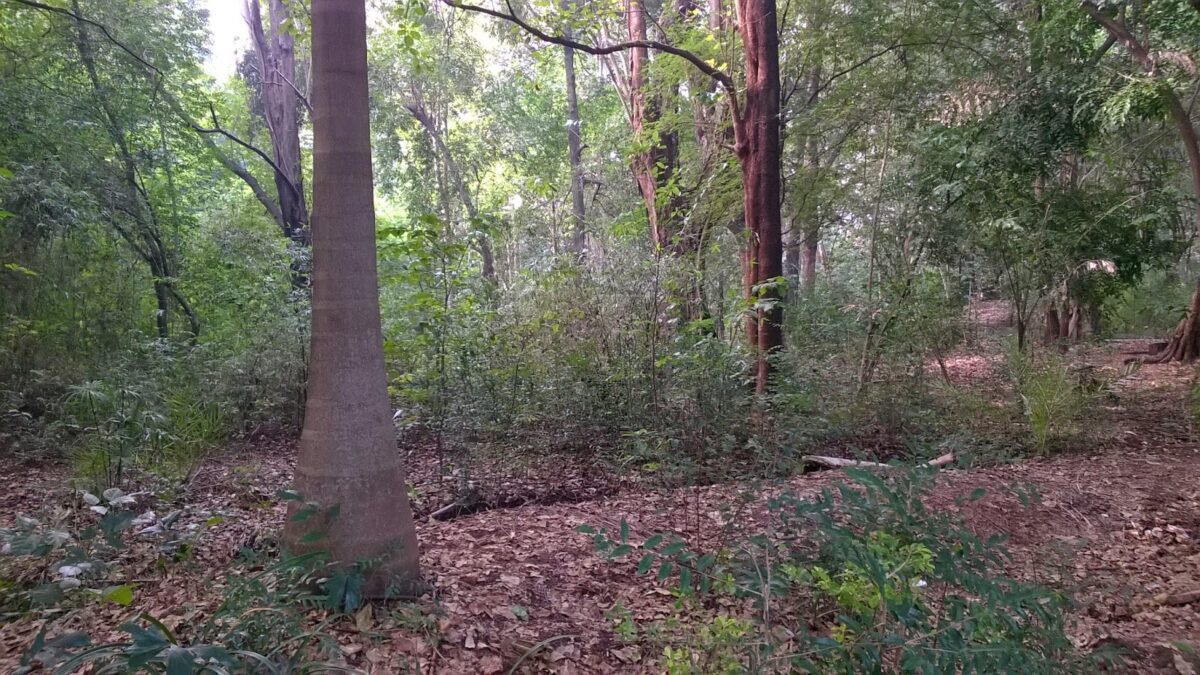
The main attraction is its huge trees. Easily at a height of five storeys, one can only guess the species based on leaves, fruit, flowers, twigs that had fallen on the ground. However we must thank some one for having thoughtfully labelled the trees which makes the subsequent process easier! The pretty foliage Filicium decipiens (Fern leaf tree) welcomes you and the path immediately splits into two. Choose any and walk around, enjoy the bird sounds and enjoy the earthy smell. I have always visited in the morning or evening but I doubt much sunlight reaches the floor through the thick tree canopy. We spot the Joannesia princeps (Arara Nut tree – indigenous to Brazil) and the Bauhinia vahlii. The joy is doubled as these are not labelled! There is a massive Sapindus emarginatus (Reetha), Caesalpinia coriaria (Divi divi), Guazuma ulimfolia (West Indian Elm) and and Tabebuia species.
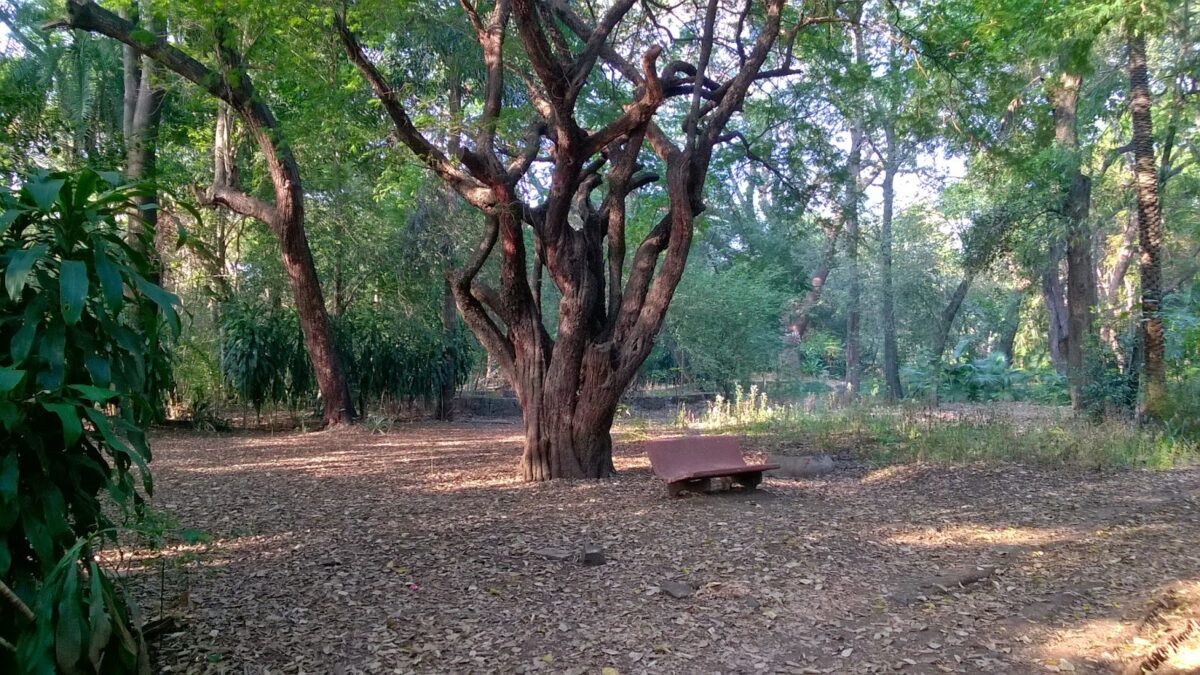
There is small pond – an extremely peaceful spot provided one is lathered oneself with mosquito repellants! That is to be expected, really, considering one is amid thick greenery. Possibly a birders delight!
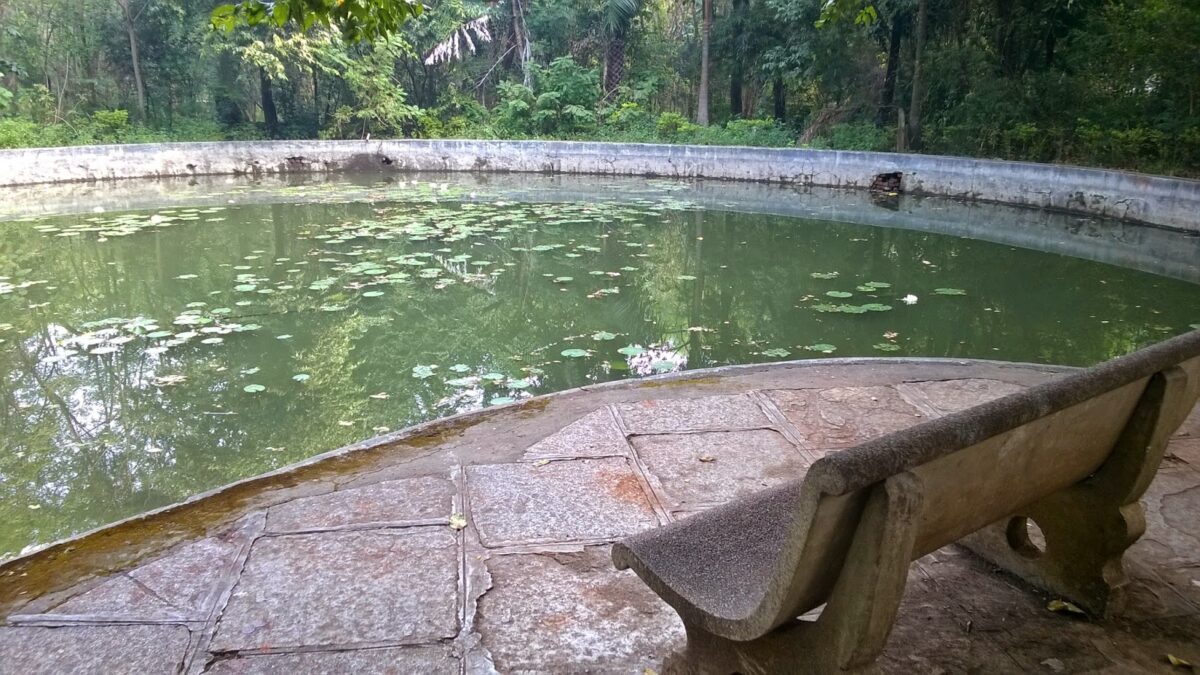
I am told that the Alice Garden is a treasure for those keen to study spiders. In fact, a recently organised Spider Walk at this place was a huge hit!
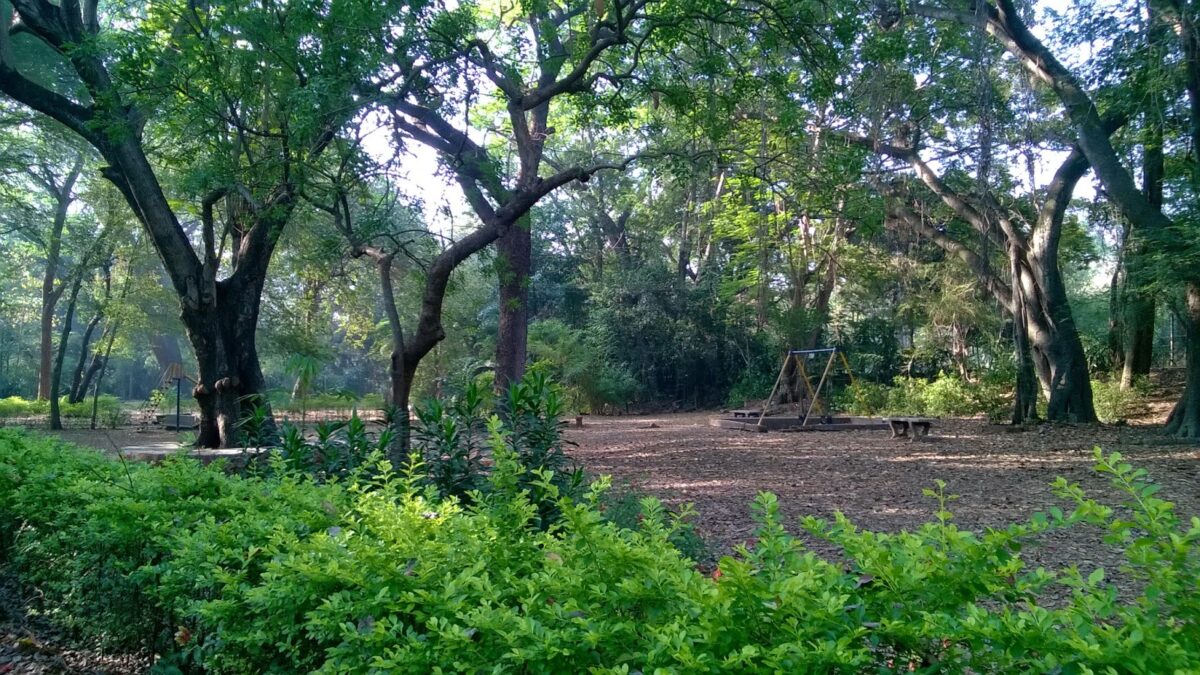
I notice a few dedicated walkers in this park who had shunned the tarred roads outside for their morning exercise. Other than them, there is some staff in a plant nursery which did not seem to be selling the plants. No other humans are visible.
The University itself is from the period when the British were present in Pune so I guess the garden is about two hundred years old. It is named after Alice Richmans. The Alice Garden has an interesting legend as well. According to some reports, the garden is haunted. Follow this link to read more about these anecdotes.
I leave you to decide.
🙂
See, Touch, Smell…
Thus I grabbed the opportunity to visit Udan during the Virasat Pune Heritage Festival 2015 as we would have someone from the ‘makers’ of the park to share information with us. Besides the biodiversity element, this park has a sensory garden. That was a major attraction for me. Several years ago, I remember using different textures as part of therapy for special kids. With my new interest in botany, I was fascinated by the idea of using plants to stimulate the sense organs. I must say the creators of this park have succeeded to a large extent and I was quite impressed.
I have seen a sensory garden in the Chicago Botanic Garden but that was at the start of the spring so most of the plants were still dormant. I have heard and read about the Garden of Five Senses in Delhi and I am quite proud that my city too has a sensory garden. This one is is geared for differently-abled kids but everyone can enjoy and learn here.
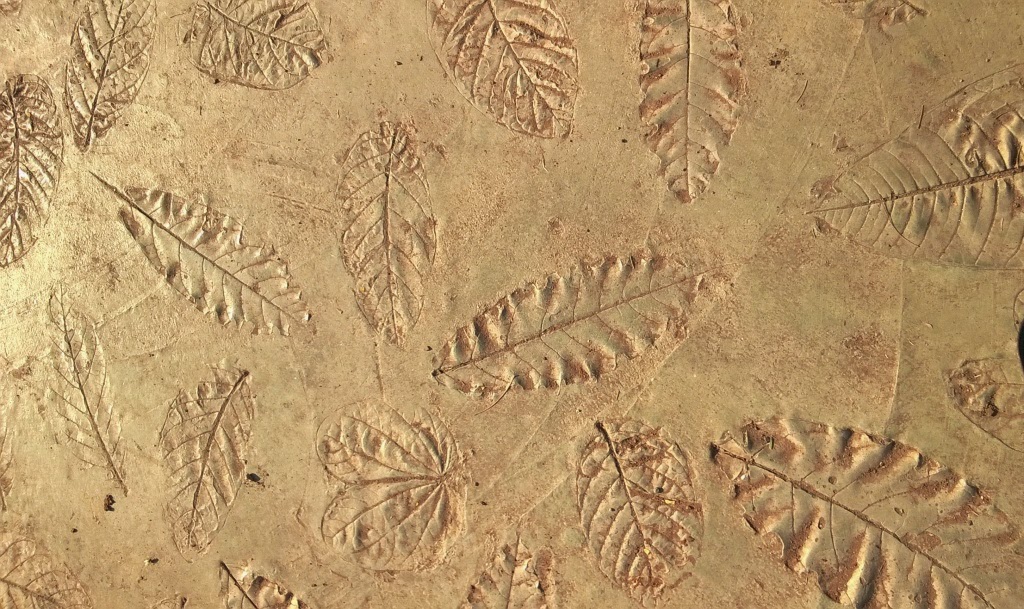 |
| Leaf imprints at the entrance |
This park is spread over 2 acres and uses different plant species and their properties to explore the sense of touch, smell, taste, hearing and vision. Children are bound to find this very interesting as one goes beyond four walls to feel and experience strange wonderful phenomenon. The entrance itself is dramatic with leaf imprints in the cemented pathway. The sign posts are in English and Marathi and in Braille. Visitors are encouraged to pluck a leaf to experience its specific properties. There is the ‘Toothache plant’ whose leaves cause a tingling sensation in the mouth, the ‘Pandanus sp’ which has a distinctive fragrance, the ‘Touch me not’ whose leaves droop at the slightest touch…
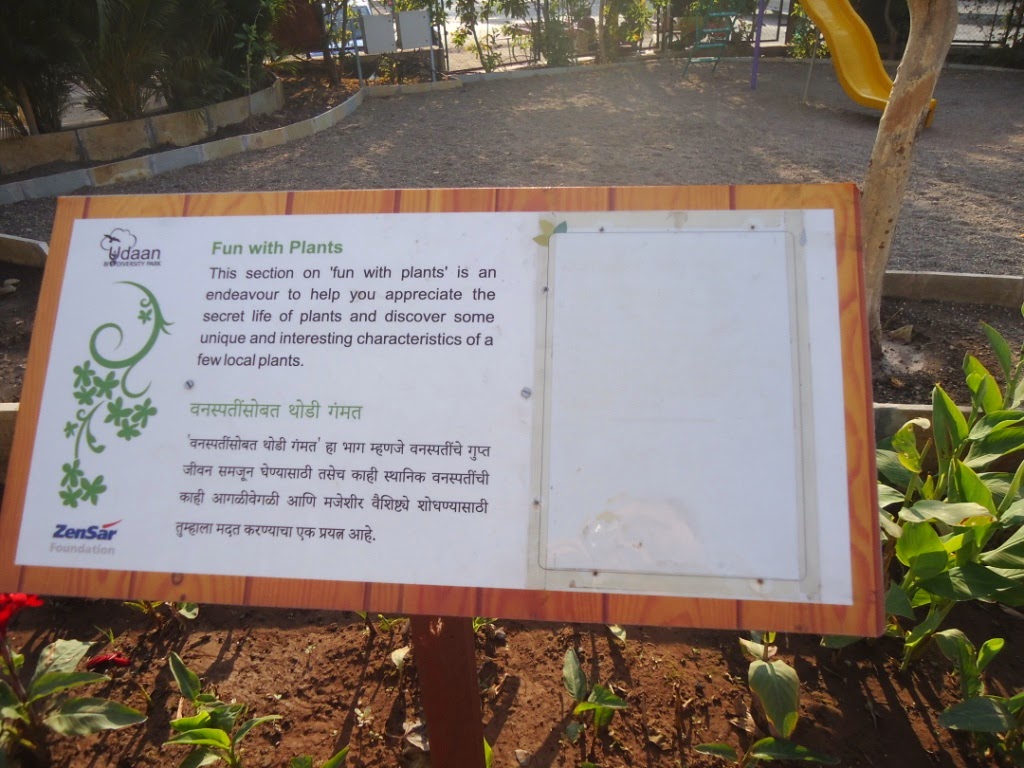 |
| Fun with plants |
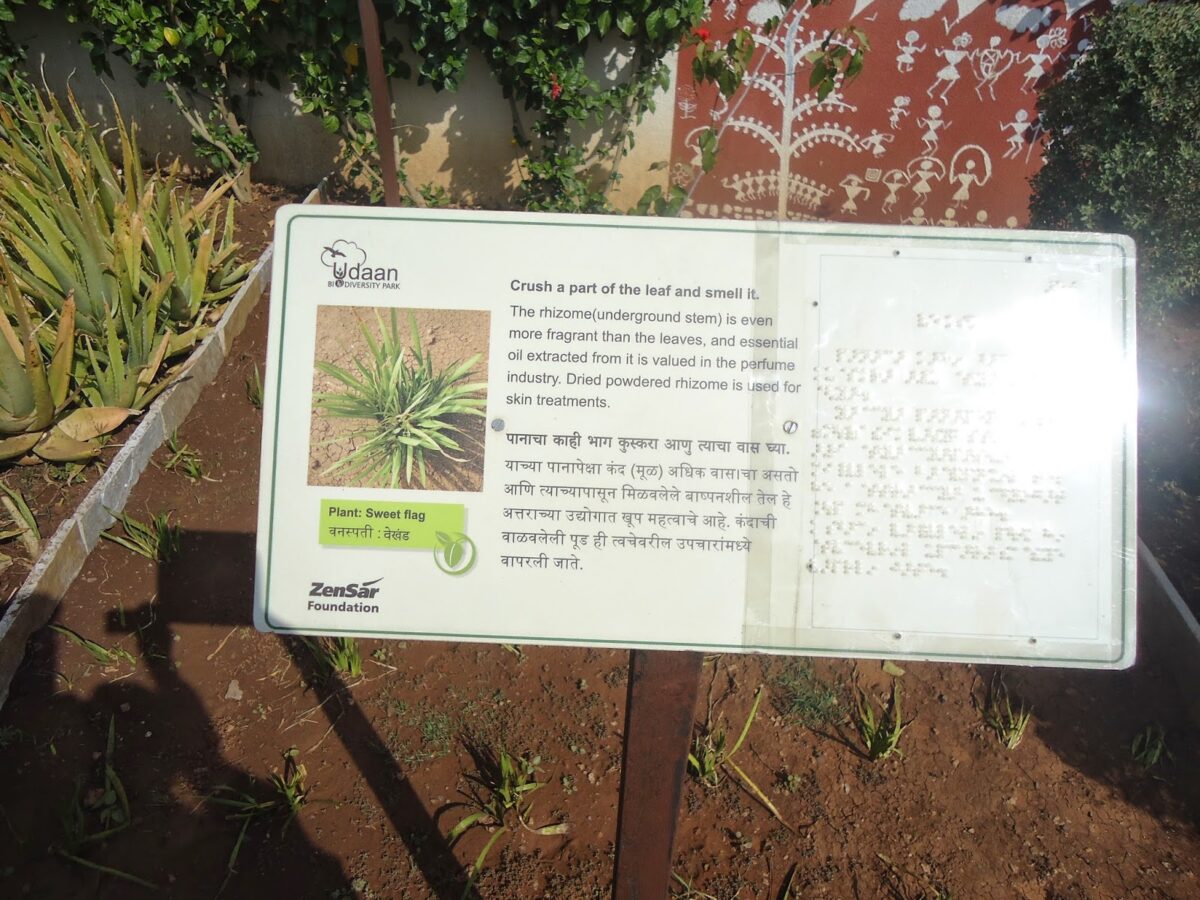 |
| Sign posts in Marathi, English and Braille |
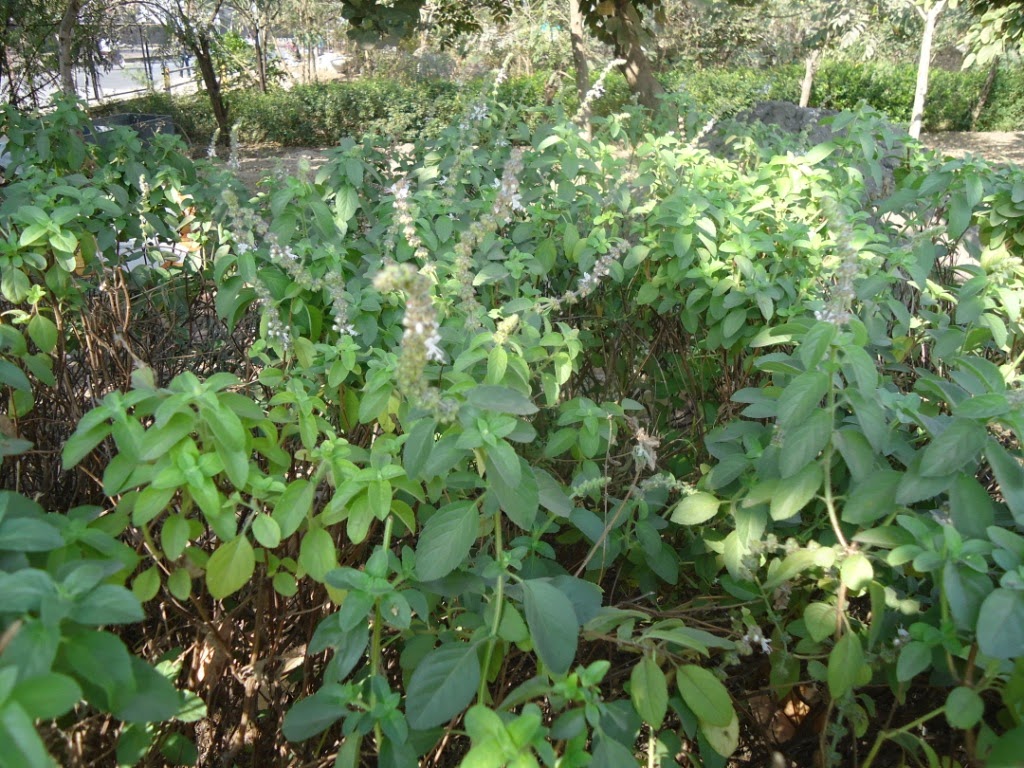 |
| Camphor Basil |
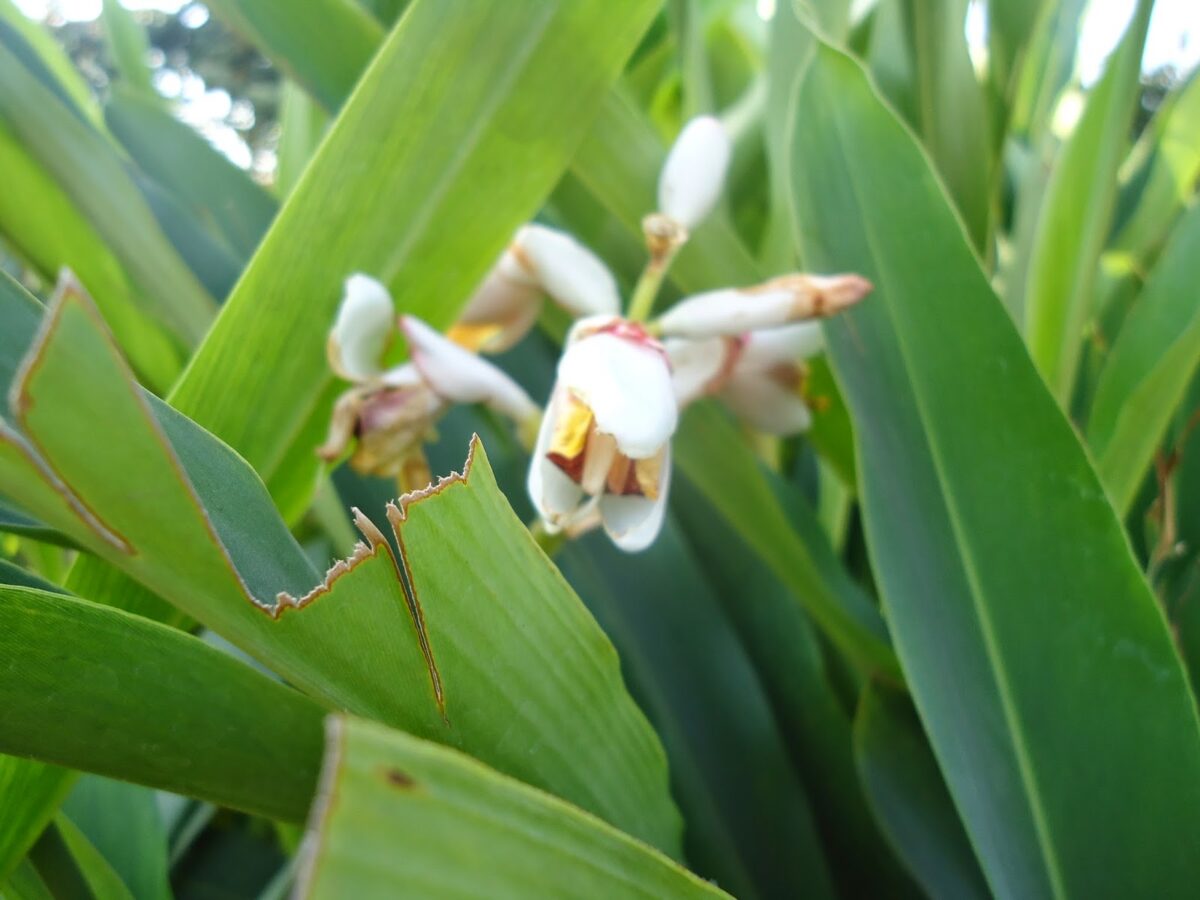 |
| Cardamom flower |
The park has a fountain in the centre and most of the time there was a gentle breeze blowing. They have retained some of the rocks that were found in the original plot of land to create a wonderful waterfall. In my humble opinion there exists scope to create a spot to explore/demonstrate sound of water and the feeling of air movement as well.
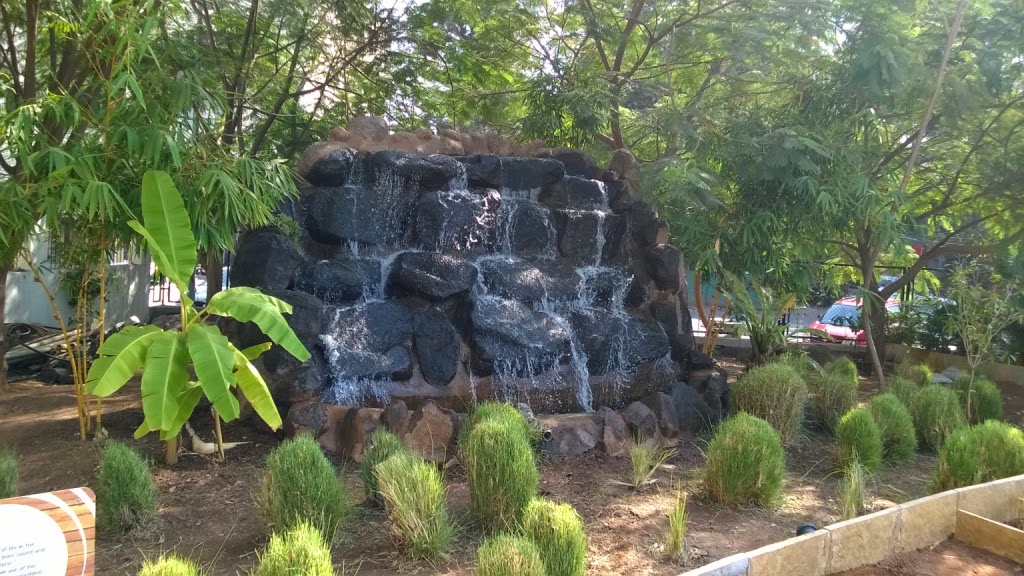
I do hope more people especially kids go out and enjoy what this park has to offer. This is a Pune Municipal Corporation Park that has been developed and maintained by the Zensar Foundation. They do give away saplings of their collection if you desire and at no cost! What more can one ask??
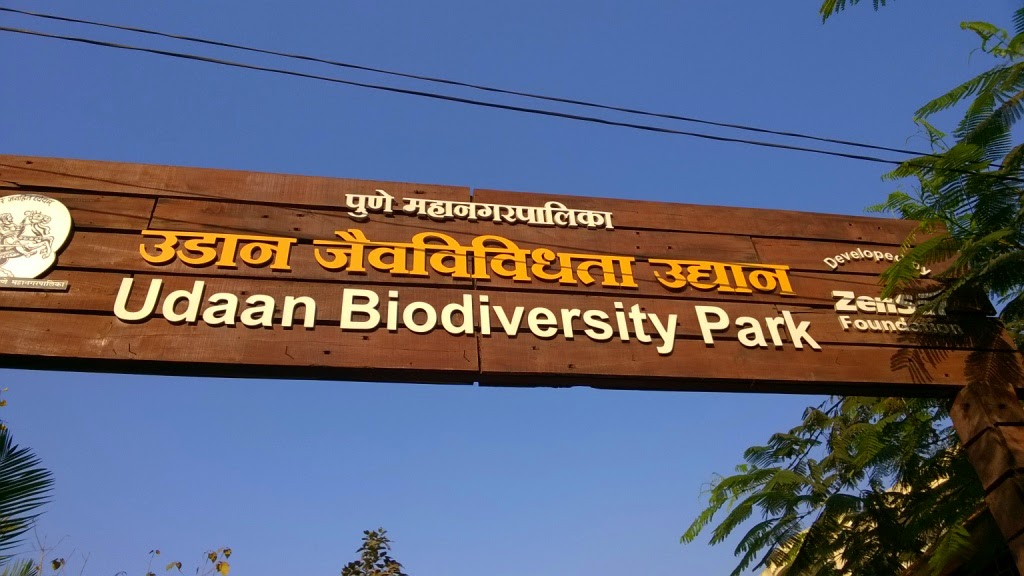
Entry to the park is free. There is space for parking.
Tips: Carry a cap/umbrella as there is not much shade. Insect repellent is advisable.
As the name suggests, Udan Park has a biodiversity element too. However I shall talk about it in another post.
Till then, Go on… Enjoy!
Spring is here!
(Follow the links to learn more about the trees)
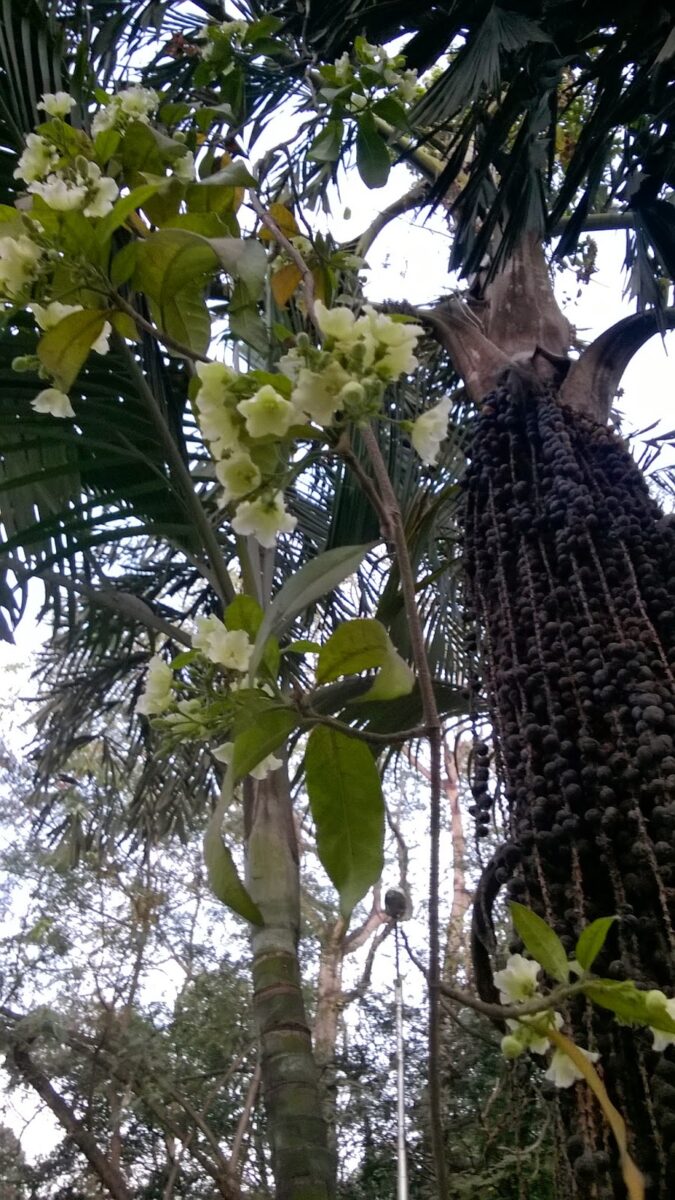 |
| Vallaris creeper |
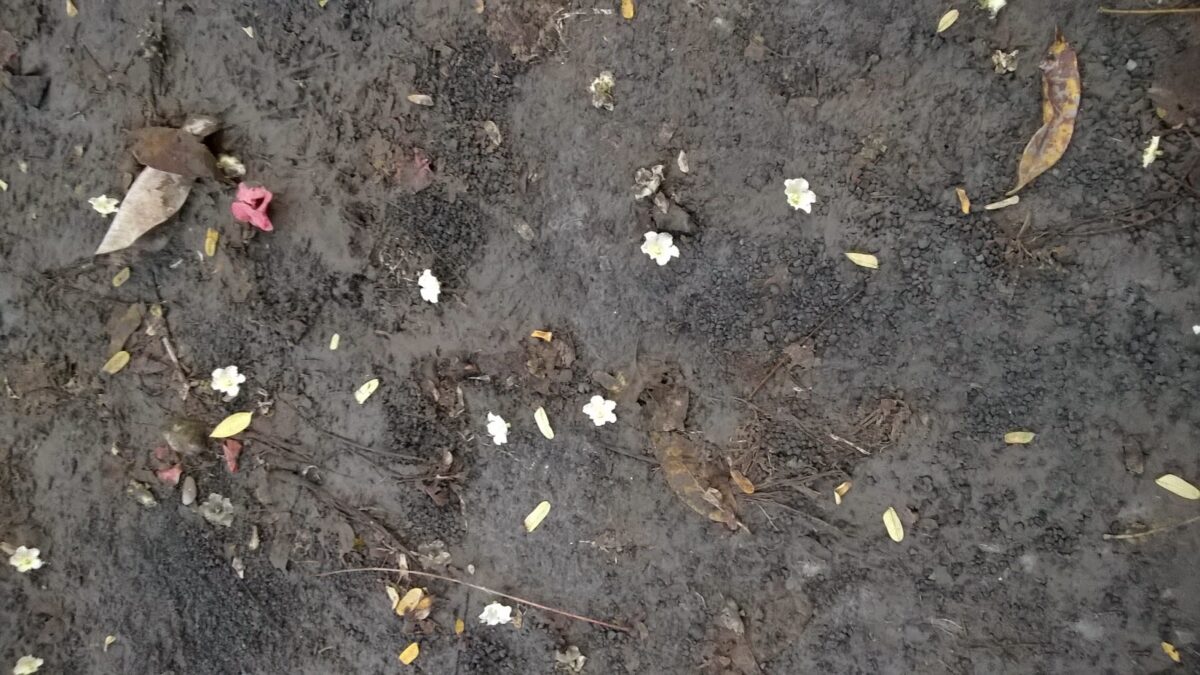 |
| A carpet of fragrant Vallaris flowers on the road |
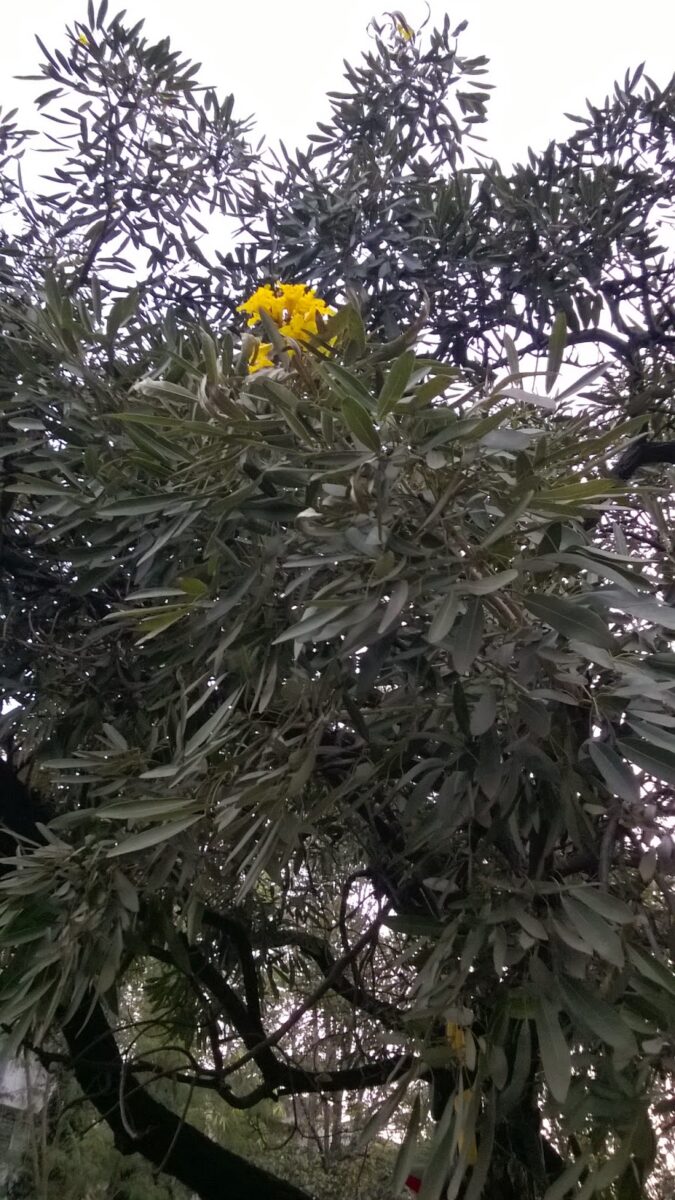 |
| The golden Tabebuia makes an appearance |
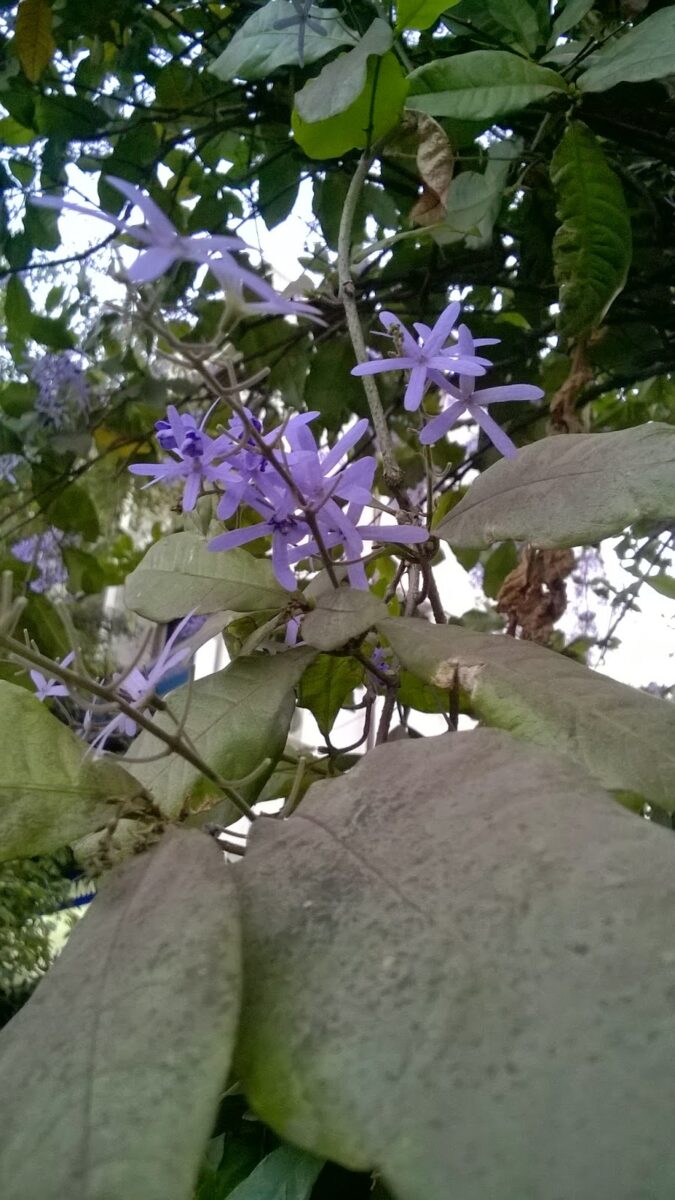 |
| Petrea |
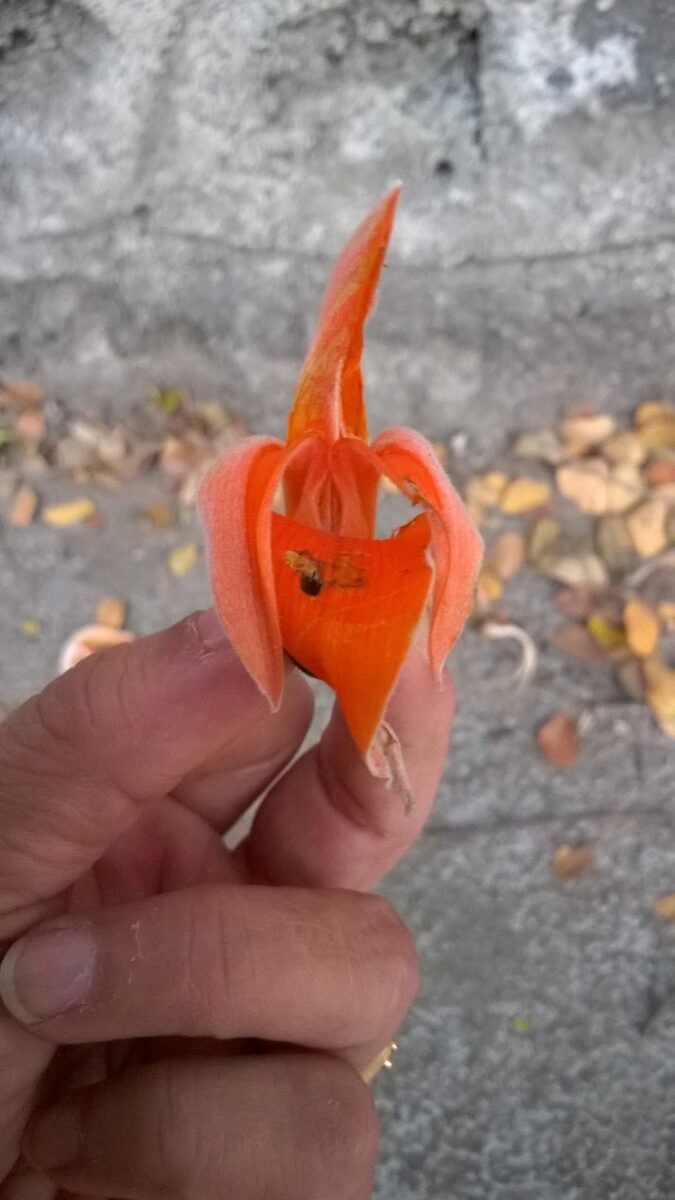 |
| The Flame of the Forest |
As they say, be humble, look down and the fallen leaves, flowers, fruit, twigs from the trees will tell you something! Look! Listen! Enjoy!
